It’s been nearly five months since Garmin first announced their high-end MARQ series watches, which top out at $2,500 for the Driver edition. Though the Athlete variant that this review is focused on will set you back ‘only’ $1,500. All-in, there’s five different MARQ units, representing each of Garmin’s core business segments (Aviation, Outdoors, Fitness, Marine, and Automotive).
For the majority of those five months the MARQ has been on my left wrist. I’ve got more MARQ data than I know what to do with. But more importantly, more time than most reviews to dive into the good…and then the less than awesome, of using the unit.
Now, before we get too far into things one has to realize that when you’re talking watches into the thousands of dollars – it’s not about the features anymore. After all, the new Garmin FR945 at $599 contains every single bit of software functionality as the MARQ Athlete. Seriously, all of it (and has better battery life). Instead, buying something like the MARQ series is because you want the look of it. Whether or not one feels said look is worth that price is a different question, the reality is that people are buying these watches just like I buy expensive camera gear. And just like that camera gear, these watches will be mostly obsolete in 3-5 years. But we’ll get back to that a bit later.
First, let’s go through an overview of the whole series. If you’ve already seen my hands-on post a few months back, then you can skip over this next overview section. Oh, and lastly, I’ve been using a media loaner from Garmin (two units actually). Once I wrap up this review I’ll (extra) carefully pack these back up and ship them back to them with all the extra insurance boxes checked. If you found this review useful you can become a DCR Supporter/Member and help support the site. I appreciate it!
The MARQ Series Overview:
Before we get into all the nuances of the MARQ Athlete specifically, we’re going to step back and discuss the greater MARQ series. If you already saw my initial hands-on MARQ post, then frankly you can skip this section – it’s nearly identical.
The MARQ Series has five versions, each targeting a different market. Effectively Garmin has taken the lower end variants of each of these watches and elevated them from a materials and user interface standpoint. For example, the Aviator watch is based on the D2, the Expedition and Athlete watches are based on the Fenix 5 Plus (with bits of the FR945), and the Captain is based on the Quatix. So software-features wise these all carry over, though with some new hardware tweaks, like a different GPS chipset and different optical heart rate sensor, as well as more than double the storage space of the Fenix 5 Plus series.
I’m going to run through each version briefly below in terms of feature highlights, along with a bit of a gallery of shots to sip your coffee against.
Common features:
All watches include the same baseline, which is essentially the features of the Fenix 5 Plus series watches, with some twists. So that includes:
– Detailed maps for the region you bought it in (e.g. North America)
– Offline music playback/storage, including Spotify support
– Garmin Pay contactless payment support (load credit cards/etc onto it)
– PulseOx SpO2 measurement
– New physio features around training load, recovery, and acclimation
– Swim/Bike/Run/Golf/Ski, and numerous other sports all included
– Full global database of ski resort runs/maps included
– Full global database of golf courses included
– Revamped user interface for the MARQ lineup
– Revamped Garmin ELEVATE optical HR sensor (officially ‘Gen3’)
– All watches have incident detection and safety alert features (similar to Vivoactive 3 Music LTE, except without the LTE)
Now, there are some interesting twists in here. For example, above you see the ski resort database, which is new to Garmin starting with MARQ. They’ve had a ski mode, but not a ski map aligned to that while actually skiing. So that’s cool. However, Garmin Connect Mobile (on your phone), lacks that map overlay – so things do fall apart a bit once you upload your ski day. Still, it’s progress.
Side-stepping slightly, there are some hardware specific notables that are common to all variants:
– Smaller 46mm size (so basically same as the Fenix 5/Plus, not the S or X models)
– Battery life: 12 days in watch mode, 28hrs GPS-on, 48hrs UltraTrac GPS
– Ceramic Bezel: For the Aviator, Captain, and Driver editions
– New charging cable: Like a blend between the Fenix 5 cables and the Forerunner 645 cables
On the ceramic bezel, Garmin made note to me numerous times on multiple occasions on multiple continents that they went to extreme measures to try and find an ultra-scratch resistant material compared to any watch they’ve ever made. Many months later I haven’t managed to scratch mine yet, but I also haven’t dragged it along the concrete walls either. I’m clumsy, so at least so far so good.
From a service standpoint, all watches share the same level, no matter where they were bought:
– 2 years full warranty
– 5 years of parts serviceability from date of purchase (i.e. if bought June 2021, it’d go until June 2026)
– Battery replacement program through both Garmin and dealer
The slide to support battery replacement through the dealer is an interesting twist. Garmin previously required customers contact them directly via their support channels. So this battery replacement aligns more closely with higher-end watch shops.
Even more interesting are two core hardware choices Garmin has made:
1) They’ve switched to the Sony GPS chipsets (a choice that repeated for all the April/May launched watches/bike computers)
2) They’ve increased the storage up to 32GB – a huge upgrade over the typical 8-16GB Garmin has used in other units
The first change was the biggest shift in direction we’ve seen Garmin make in years. Up until MARQ all of their more recent watches have been using MediaTek GPS chipsets. In fact, Sony is a relatively new player in this space. But they’ve garnered significant attention due to their extremely low power profile. Suunto and Polar both switched to Sony GPS chipsets this past year for their top-end watches, however, that didn’t go terribly well. COROS also introduced a watch with it too – and again, GPS accuracy was hardly stellar. It’s a dangerous gamble for Garmin to make. They’re effectively entrusting their ability to ‘fix’ Sony’s GPS challenges, in order to save significant battery life. Does it work? I’ve got more thoughts later in the post after doing some tests.
The second change related to storage space is also interesting, but also confusing. Garmin adopting a sprawling 32GB of space would set the stage for far more maps to be available on the device. But despite that, Garmin is only loading the local region maps, and not the full international detailed map set. So you’re still stuck either paying for maps when you travel, or downloading them via clunky steps from 3rd parties. I fail to see how people spending $2,500 on a watch want to take those steps. It seems petty by Garmin.
Athlete Edition Differences:
This variant is as close to a Fenix 5 Plus as you can get from a feature standpoint. But it also has a slew of new fitness-focused features that Garmin further expanded on back in May with the Forerunner 45/245/945 series:
– They’ve improved the race predictor
– They added training load focus and deeper trainer effect details
– They added heat & altitude acclimation, including VO2Max/Training Status compensation for heat
– They added respiration rate
– They added Incident Detection & Safety/Tracking Assistance
– They added PulseOx (not on all Fenix 5 Plus units previously, only the 5X Plus)
Virtually all of these announced metrics above are driven by FirstBeat. Most of them aren’t terribly different than before, but they manifest themselves in cleaner ways. I’m going to dive into that in the breakout Athlete section below. Note that the Athlete edition only comes with a silicone strap, which honestly, I find kinda disappointing. After all, there are Fenix 5 Plus variants for some $500 less that include both a silicone strap and a fancy metal strap – and the FR945 even less expensive with the exact same features.
Expedition Edition Differences:
This variant is like taking a Fenix 5 Plus, but then steering the direction towards longer range tracking and away from normal sport/fitness features. The two unique bits this has compared to a Fenix series unit are:
– Expedition App: This allows you to do 4 continuous weeks of GPS track at 1-hr intervals
– Orienting lock: Allows you to lock a heading from within the map view by holding the start button
And again, for these features, I’m going to cover them down below in the Athlete/Expedition detailed section. The first one though related to a four-week GPS track is fascinating. Not just because of the watch side of the house, but also Garmin working on the backend platform to ensure it properly supports files uploaded from that. The Expedition includes an Italian Vacchetta leather strap. Without question, it’s the prettiest strap out of all the editions in my eyes.
Aviator Edition Differences:
This watch is based upon the Garmin D2 PX Delta unit (which is in turn based upon the Fenix 5 Plus series). It’s focused on piloting an aircraft, including integration with some of Garmin’s flight management systems via the Flight Stream 510, and has pre-loaded aviation maps and airport databases. [Updated] In addition, beyond all the features of the D2 PX Delta watch (which came out last July), there doesn’t appear to be anything new. The below three features Garmin noted as new were added via firmware update to the D2 PX back in December.
I’m a bit of an aviation geek. One of these days I’ll finish my pilot’s license. But looking at both this and the D2 PX, there’s so much cool stuff packed in here, especially around things like NEXRAD weather radar. One of these days I’ll get to use it for its intended purpose. The strap is titanium with a “multi-link swept wing design” (their description, not mine).
Captain Edition Differences:
This watch follows after the Garmin Quatix series, and is actually a notable upgrade from the Quatix 5, since that unit as based on the Fenix 5 and not 5 Plus series. So this variant gains all the music/contactless payment/maps bits that one lacked. The main focus here is connecting to Garmin’s marine units to actually control your boat from your wrist. For example, when connected to the GHC 20 you can control autopilot. It also supports hotkeys for actions like man overboard plotting and automatic navigation to it, as well as functions like anchor alarms and tack assist modes.
With the Captain edition they’re adding the following:
– Current weather watch face, including at specified home port
– Regatta Timer with GPS and dedicated bezel markings using start/stop hotkey
And again, the big update here is also the mapping compared to the previous Quatix 5, which didn’t contain mapping. The strap is Jacquard Weave and is pretty stunning in real-life. If it wasn’t so costly, I’d definitely consider it for my Fenix 5 Plus unit.
Driver Edition Differences:
Ok, ‘differences’ is the wrong word here. Because Garmin has never created a watch in this category before. So this is a first for Garmin. Still, these are new features above/beyond what a Garmin Fenix provides today, and they’re all aimed at driving versus sporting. They are:
– 260+ pre-loaded race tracks (full list here)
– Race App
– Track Timer
– Live Delta Time
– Auto Lap Splits based on position
– Lap Time Repeatability Score (LTR)
– Last Race Summary
– Virtual Pit Wall
Unfortunately this particular item isn’t one I can readily test, and since there’s no past context to base features on, my ability to discuss it in depth is somewhat slim. Still, I went ahead and tried to find these features and apps on the watch as best as possible for the gallery below.
Phew – got all that? Good, that’s a lot of watch imagery goodness for you! Now, to put some cold water on that, here’s a nifty graphic from Garmin showing you how many clams you’re going to need to shell out for each version:
Eeks! At least they’re pretty.
Now interestingly, you won’t find these in any of the Garmin retailers/stores you know today. Garmin will only be selling these watches through high-end watch shops (some of which sold the Garmin CHRONOS lineup previously, but most are new to Garmin). That’s a big shift for Garmin, which won’t offer the watches through retailers that are specific to each product group. Garmin says they expect customers looking at this range of watches to be going to dealers that sell TAG, Breitling and others – and thus, they’d likely already have a connection with that watch shop.
That may be true, but it’s also questionable. As a runner, I’d never go to a high-end watch shop to find a running…err…Athlete watch. Similarly, if I was into Garmin’s marine gear (where I’d probably have dropped over $10,000 to begin with for their systems), I’d likely go to my marine dealer. Same with aviation, and so on. I’m not terribly sure that I’m going to get someone that fully understands the nuances of all the tech features in a Garmin watch from a typical high-end watch dealer. And given Garmin’s entire pitch is the tech, that seems questionable.
In fact, as of today if you want to purchase one in the US, your best bet is to go to Macy’s. You know, where you buy socks, underwear, and Kitchen Aide stand mixers on sale with a 20% coupon clipped from your Sunday circular. Though, this weekend’s underwear coupon isn’t valid on the MARQ series. I checked.
Note that I don’t plan to review the Driver, Aviator, Captain, or Expedition editions. Mainly because I currently lack a racecar, airplane, boat, or mountain. If anyone wishes to donate one of those objects to me, I’ll happily review said watches.
Unboxing:
I’ll be honest, the initial exterior of the Garmin MARQ box is horribly underwhelming. It’s just a blank white box. Less exciting than even the most inconspicuous white box of illegal narcotics.
However, once you take away the vanilla exterior you’re left with a far more interesting box…err…case. Yup, it’s an actual metal case. Roughly akin in size to one of those squarish tissue boxes.
Crack the lid on that artillery case and you’ll find a small pile of paperwork, which includes an international warranty card. An attempt to be like the fancy watch companies.
I’m curious though – if you buy at Macy’s, do you get a Macy’s ‘stamp’ in that spot? I mean, just asking for a friend.
Below all that you’ll find the watch longingly looking up at you:
Remove a few decks, and here’s what you’ve got:
There’s a hard card that on one side warms your heart with the best motivational moment Kansas could muster, and the flip side explains the meaning of MARQ button and bezel life:
Then you’ve got the tightly wound charging/syncing cable. No Garmin cable ever produced has exhibited as much Type-A personality.
This one even glistens in the light, knowing it’s totally unique in the Garmin family – compatible with nothing else the company makes.
As for the watch itself, here’s the backside of it. Fear not, we’ll see plenty of the face of it by the end of this review:
You can release the bands by pressing the small buttons on the underside of the straps nearest the watch. That allows you to spend another $100+ for additional straps. Meanwhile, the underside gives you the coordinates of Garmin’s Olathe headquarters in Kansas. While also letting you know it was still made in Taiwan like every other Garmin Fitness/Outdoors device.
With that, you’re ready to get it all paired up to your phone via Garmin’s smartphone app Garmin Connect Mobile.
While you technically don’t have to do this, it’s how you’ll get things like smartphone notifications, setup streaming services like Spotify, and automatically sync your workouts to sites like Strava. Among a million other things.
Day to Day Basics:
This section is essentially a walk-through of the basics of the watch and how it works with Garmin Connect Mobile. If you’ve been around the Garmin watch block a few times, then honestly none of this will be super new. What will differ though is the user interface, which is updated on the watch compared to a Fenix 5 series. Not drastically different, but different nonetheless.
However, if you’re totally new to Garmin watches and reading this – then consider this section a bit of a primer.
First up is the watch face. Each of the MARQ watches have a unique watch face for that edition. Like almost all Garmin watches, these are customizable both with watch faces from the Connect IQ app store, but also just by tweaking virtually every bit of data you see on it.
All of the watches have the same button layout, and this mirrors the Fenix series. The left up/down buttons iterate through the widgets. These include current weather (newly revamped widget), your last workout, training status, history, music, health stats, and plenty more. Here’s a small gallery of what it looks like. Note that virtually all of these widgets have had the UI (user interface) tweaked compared to the Fenix series:
The middle button on the left side accesses the settings controls area. This is both for individual sports/apps, but also watch settings. This too starts off similar to the Fenix 5 series, but then takes a tweak to the user interface down lower in the menu. The settings options here are all the same best I can tell, just simply re-arranged.
Next, you’ve got the upper right button. If you tap this once this takes you to the sport mode selection. It’s also where you’ll choose to start apps that you’ve downloaded. Again, this is updated. There’s a continuously sliding view of the earth behind each sport/app. It’s a clean never-ending animation in real-life that adds a nice touch to things.
By selecting a sport or app it’ll go off and start connecting to the relevant sensors, as well as acquiring GPS. So for the Athlete edition that means connecting to sport sensors like speed/cadence/power sensors (and plenty more). Whereas for the Aviator edition that would be to flight management systems, and with the Marine unit that’d be to Garmin’s suite of control systems there. If selecting an indoor sport (like Yoga), then it wouldn’t enable GPS.
Fear not, we’ll talk all about the sports bit in the next section. So I’ll save all of that for there. Meanwhile, for the Aviator/Driver/Captain units, I’ve tried to include as many photos above in the galleries in the earlier sections, to cover some of those features. But given I lack a boat/plane/race track, that’s a bit tricky.
In addition to having pressed that upper right button once, you can also long-hold it. Consider that the party-trick of each edition. For example on the Athlete edition if you long-hold the start/stop button it’ll bring you to a new training metrics page unique to the MARQ Athlete. Whereas on the Aviator edition it’ll bring you to the DIRECT-TO option for navigating to a given ident. On the Captain edition it pulls up the Regatta timer, and on Expedition it pulls up the heading lock on map screen. Essentially, for each edition it connects to the banner new feature not seen on other watches.
Meanwhile, on the back of the unit you’ve got the optical HR sensor. This is what Garmin calls their 3rd generation ELEVATE sensor, though in reality there’s been many more minor editions in between. Still, this essentially takes the Garmin Fenix 5X Plus optical HR sensor with PulseOx and upgrades it yet again. It’s the same sensor used in the Forerunner 945 and Forerunner 245.
Also on the back you’ll see the ability to utilize the QuickFit type straps that Garmin has. These lock onto the watch pretty securely, and are slightly updated with the MARQ series. All watches include a single strap on the watch itself in the box, but no secondary straps. If you want those, you’ll need to shell out a boatload of cash.
Meanwhile, virtually everything you do with the watch is being synchronized to Garmin Connect via their smartphone app (Garmin Connect Mobile). For example, that optical HR sensor is constantly monitoring your heart rate 24×7 with its little green LED. That’s uploaded alongside the more frequent SpO2 readings taken via the red LED on the back. That’s also uploaded and charted on Garmin Connect Mobile:
In addition, all your daily activity stats like steps, stairs, distance walked, etc… is also present within the app as well as online on the website too:
Newer metrics found on the more recent Garmin devices are also seen there too – like Body Battery, which aims to quantify the blend of sleep, stress, and activity together.
The calendar app will show both manually started workouts, as well as automatically detected exercise. For example, my run yesterday was a manually started workout, whereas the numerous bike rides around town between office and home were automatically detected:
Finally – one last thing to briefly touch on is notifications. All watches will display smartphone notifications from both iOS and Android. You can control these via the notification centers on both platforms. The notifications are simplistic, and not on the same level as the Apple Watch in terms of things like pictures or such (but some emoji do show up):
Note that with an iOS device you can’t reply/answer back notifications, due to restrictions by/from Apple (which doesn’t allow 3rd parties access to text messages). My understanding is on Android however you can reply back from the watch itself.
Ok, with that I think we’ve covered all the basics, now it’s time to get sporty.
Sport & Training Specifics:
In a bit of a weird twist, when the MARQ series was first announced we actually didn’t know many of the new fitness features that lurked below the surface. Sure, some hints of changes were visible – but the entire story took another month or two to fully light up, roughly when the Garmin Forerunner 945 was launched. That’s when the full extent of all the new physio-focused features became far more clear and the differences to the Fenix 5/5 Plus series became more marked.
For example, all of the following fitness-focused features are above/beyond the Fenix 5 Plus series (all are also on the Forerunner 945 though):
– Added training load focus stats
– Added deeper training effect details/metrics
– Added heat acclimation (for any workouts in temps over 71°F/21.6°C)
– Added altitude acclimation (for any time or workouts spent above 850m/2,788ft)
– Added Incident Detection (if you crash your bike it notifies someone)
– Added respiration rate (with a chest strap)
– Added Safety/Tracking Assistance (you can press button to send help alert to friends/family)
– Revamped race predictor to be a bit more strict on predictions (more than just VO2Max lookup charts now)
– VO2Max now compensates for heat (previously it didn’t)
– Training Status now compensates for heat (previously it didn’t)
– Added PulseOx sensor (was only on Fenix 5X Plus previously)
And to be honest, if you added atop that list ‘changed GPS sensor to Sony’, then you’d basically have the entirety of changes over the Fenix 5 Plus series, as all other changes in the MARQ are specific to materials and more cosmetic in nature. Ultimately, if you distill this entire review down – the only difference between a MARQ Athlete and a far cheaper (and plastic) Forerunner 945 is materials (and battery life, which is more on the FR945). All the sport-focused software features are identical except it does have a few additional modes like Jumpmaster and Tactical, which harken from the earlier Fenix/Tactix days.
So let’s start at the beginning, and that starts with choosing a sport. To do so you’ll simply tap the upper right button to display the sport modes. Once you tap this button the unit will actually start looking for GPS, even before you select an outdoor sport. It’s trying to get a jump on the task at hand.
There are numerous sport modes available (which technically speaking are apps). Some sports have super detailed metrics, whereas others are a bit more bland. For example the detail and focus on running and cycling is strong. But if you go to kayaking or rowing, you’ll get overall metrics just fine, but not things like paddling rates. So again, it varies. In any case, here’s the complete sporting listing:
Trail Run, Run, Hike, Bike, Bike Indoor, Open Water Swim, Triathlon, Golf, Navigate, Track Me, Map, Multisport, Treadmill, Indoor Track, Climb, MTB, Pool Swim, Ski, Snowboard, XC Ski, SUP, Row, Row Indoor, TruSwing (Golf related), Project Waypoint, Walk, SwimRun, Kayak, Strength, Cardio, Yoga, Floor Climb, Elliptical, Stair Stepper, Clocks, Boat, Tactical, Jumpmaster, Other [Custom]
You can iterate through the list by simply pressing up/down, as well as add sports to your favorites section (for quicker access). One minor nuance is that I’ve found it somewhat easy to randomly end up in the sport selection menu (pending me waiting to actually select a sport). For example, as I went through security the other day at the airport I came out the other side and found my watch on the sport selection screen (whereby it’s burning GPS time already).
This is likely because the larger yellow selector button butts right up against my wrist bone, and is more easily accidentally pressed. While the menu will time-out automatically after a few mins, I find myself on this menu multiple times per day somehow.
Once you’ve picked a mode for your sweat session, it’ll complete finding GPS, as well as connect to any sensors (such as heart rate monitors or cycling sensors). The MARQ series supports all the same sensors as the Fenix 5 series and the FR9945 did, including Bluetooth Smart sensors as well. There’s no additional/new sensor types support here. Here’s the full listing of sensor types it supports:
Headphones (Bluetooth), External Heart Rate (ANT+/Bluetooth Smart), Speed/Cadence (ANT+/Bluetooth Smart), Cycling Power Meters (ANT+/Bluetooth Smart), Footpods (ANT+/Bluetooth Smart), VIRB Action Camera (ANT+), Tempe temperature sensor (ANT+), Shimano Di2 (private-ANT), Cycling Gear Shifting (ANT+), Cycling Lights (ANT+), Cycling Radar (ANT+), Extended Display (ANT+), RD Pod (ANT+), Muscle O2 (ANT+), Garmin inReach (ANT+).
So basically, anything and everything you could want. Also, it supports Garmin’s ‘Xero’ lineup of range finders/sights (you add those in a slightly different spot). The only notable exception to the list above is cycling ANT+ FE-C trainers, which are not connectable here (but are using Garmin’s Edge devices).
You can save/connect multiple sensors of the same type. For example, if you have multiple bikes, each with their own cadence sensors on them, it’ll save those and automatically connect to them when those sensors turn on. Additionally, via data fields and apps, companies can create their own sensor types. We’ve seen companies create tire pressure sensors and aero sensors.
Note that sensors are across the entire device. So you define sensors and all activity profiles/sports can use them. I’ve saved numerous sensors to my watch, and if I’ve got two sensors active that ‘conflict’ (like two HR straps nearby), it’ll simply ask which one to use.
Speaking of those sports above, each one is customizable with unique data pages/metrics, and settings. All of these screens are customizable, and you can create/add new pages/screens as you see fit (a crapton of them, more than I could create). There are also stock screens with certain data types, including Virtual Partner, Compass, Elevation, Map, and Music controls.
However, custom data pages can have up to four data fields on them, in a variety of patterns. You can choose the pattern and then choose the individual data fields to add to those pages. Here’s a gallery of different page looks:
Like I said in the Forerunner 945 review, I’d like to see Garmin allow users to put more data on these screens. Especially when looking at the larger MARQ screen. After all, Suunto allows significantly more data on their custom pages. And while you can download some 3rd party Connect IQ app data fields that do such things, that’s quite frankly cumbersome. There’s no good reason to limit it to 4 data fields per page on such a large screen.
Now that we’ve spent half our life setting things up (in reality, you don’t need to do anything above I noted, you can just press start and go), it’s time to begin our workout. Just press the start button again and it’ll start recording and displaying your metrics. Here’s a quick look at what some of those metrics look like in yet another gallery. You can never have enough galleries:
With everything cooking along you’ll be out running, riding, or what-not. For a sport like running, I saw no issues with pace stability. It reacted just fine to my changes/shifts in pace. I’m usually looking for quick responsiveness when doing something like a track workout, yet more stability on a longer run. Either way, that hasn’t been a problem for me (or perhaps I’m just a stable runner).
Note that the MARQ series does include incident detection (as well as safety alerts if you are in a situation where you want to quickly notify friends/family something might be up). Where incident detection is basically if you crash while riding your bike, it’ll trigger. The unit is essentially looking for a high g-force type event followed by nothing. Meaning, merely landing a jump hard shouldn’t trigger it, but rather crash-landing a jump and then having your speed go to zero will likely trigger it.
In practice, I have had one false positive while riding (and then another false positive on the FR945, which employs identical tech). In the case of the FR945 I understand why it triggered (I was riding along and dropped off a sidewalk and then immediately stopped quickly at a stop-light). But with the singular MARQ false-positive I was happily riding along in the Alps and it just randomly triggered. Mind you, this is like nearly 5 months of riding with it and only having it false-positive trigger once isn’t the end of the world. You’ve got 10 seconds to cancel it (though that can be tricky to do while mid-descent). You can tweak who it contacts and how it works in the settings of both the device and the app:
Once you’ve completed your workout (by pressing stop, then save) you’re going to see the new post-workout screens. These start by showing a quick outline of your route if outdoors, and some high-level stats. It’s divided up into a rotating upper portion that lists Summary, Training Effect, VO2Max & Recovery, and Training Status.
Then lower down you’ll get more detailed stats about different areas, such as laps or a map or training effect.
It’s within these Recovery & Training Status bits that you’ll start to see some of the new features that were also launched on the FR945 this past spring. First is that there’s new Training Effect details and labels. Training Effect itself has been around a long time on Garmin watches/bike computers, but now it’ll list the exact training benefit of each workout you do. For example my ride last night it shows the training load (181) at the bottom, and the specific benefit up top in orange (Threshold). You’ll also see the breakout between anaerobic vs aerobic listed too.
If I press the down button, I’ll then get a tiny bit more detail for both aerobic and anaerobic, each on separate screens. It’ll indicate exactly what within each of those two classes it was benefiting.
But for a lot of folks the above detail wasn’t super helpful. It’s kinda just noise for the average athlete. So within the FR945/MARQ series you’ll now get more specific training status details for fitness and load. This basically tells you whether your fitness is improving or declining (or maintaining), and then what your load is doing (up/down/maintaining).
If you press down you’ll get a 7-day load widget, showing you the types of load and the amount of load you accumulated each day. Additionally, it’ll list the optimal range of load for you, based on your current load. Meaning that if you’ve just started training and it’ll keep that load lower, versus if you’re pumping out 10-12 hour weeks each week – you’ll see that be higher.
As usual with these sorts of metrics, you’re really looking at about a four-week timeframe until it really starts to learn you. And in fact, the next page is geared exactly towards that. This page will show your four-week load focus, including these little pill icons that basically show you whether each load type is balanced correctly. Thus if you’ve got too much high-intensity load versus not, it’ll indicate that. Like eating, varying intensity in your workout diet is important. Simply doing a hard workout every time isn’t the path to getting faster.
In fact, if you press the enter button it’ll tell you exactly how you should tweak your training diet to better align things:
After that, the next page shows your current recovery time. In general, this is for your next ‘hard workout’ and not just the next workout in general. I’ve always somewhat taken this number with a grain of salt, and usually find it a bit too conservative.
After that, I’ve got altitude acclimation, which is on both the FR945 and MARQ. The goal behind both of these are post-workout calculations tied to figuring out whether or not you’re acclimated to a given temperature or altitude. Obviously, both can significantly impact performance. Starting with heat acclimation, the function leverages nearby weather stations. So your unit has to have connected to Garmin Connect Mobile within 3 hours of starting your ride in order to receive that weather data (it doesn’t use on-device temperature).
You’ll see small icons on the bottom of the training status page if you’re in the midst of acclimating to anything. In the case of below last week, I managed to score both heat and altitude acclimation icons at the bottom:
Altitude acclimation/adaption starts with a minimum threshold at altitudes above 850m/2,788ft, and tops out at 4,000m/13,123ft (Garmin doesn’t calculate above that level, sorry folks). Garmin says that they divide up training vs living altitudes, just as typical studies would. The company says that adaptation algorithms within the MARQ/Forerunner 945/Edge 530/830 assume total adaptation after 21 days, and that adaptation is faster at the beginning of altitude exposure. Additionally, adaptation will decay within 21-28 days depending on acclimation level.
Fun geekery moment for you: On the Forerunner 945/MARQ, the altitude acclimation is based both on workouts, but also on where you sleep each night. At midnight the unit will quietly take an altitude reading (actually, it’s doing it all the time anyway), and then use that reading to determine acclimation. Where this gets fun is when you take redeye flights, as it’ll take that reading at between 6,000-8,000ft (pressurized cabin altitude of a commercial airliner). At first you may think this would skew results, but in reality – it’s actually correct. Your body is acclimating to that altitude. Where it’s slightly off is that it assumes you’re spending 24 hours at that altitude, rather than the 5-14 hours you’re likely spending at that elevation.
Meanwhile, the next screen is heat acclimation.
For heat acclimation it applies a heat correction factor for rides above 71°F/22°C, using a percentage based amount from published studies (humidity is also factored into this as well). This is then shown in the training status widget. Garmin says they assume full acclimation takes a minimum of 4 days, and acclimation/adaptation to a given high temperature will automatically decay after 3 days of skipped training within that heat level.
Some of this is available within the Garmin Connect Mobile app, but it’s messy and scattered at best. For example, here’s the Training Effect pages (under Performance stats, but not the self-titled ‘Training Stats’ section) – but this is missing the matching color coding of the device itself (no purple here):
However, the ‘Training Status’ section gets you a bit closer. Showing altitude acclimation as well as heat acclimation. But there’s still weird gaps. For example, the ‘Load’ metric on the screen is missing a value on the main page. Though, it does do an interesting job at dividing up whether any given week was productive or not.
In any event, re-winding a little bit to where we left off post-workout, the workouts are automatically synced to Garmin Connect via Bluetooth to your phone or WiFi if you’ve configured that. From there you can open it on Garmin Connect Mobile:
Or, on Garmin Connect itself. Here’s a recent workout of mine from last night if you want to poke around by clicking on the link:
In addition, at the same moment these activities are sent to any 3rd parties that you’ve connected to your account, like Strava or TrainingPeaks, among many others. At which point, we’ve covered how everything works from a sport specific standpoint. Of course, there’s countless nuances to other metrics you can dive into like VO2Max (which now accounts for heat), or stress tracking via HRV data.
Now switching very briefly to swimming is that as of today, in the official production firmware, Garmin doesn’t leverage the optical HR sensor while swimming, whereas Polar and Suunto do. But that’s already changing in beta builds for the FR945, and likely soon the MARQ too. Whether or not it’s accurate will vary (even Polar & Suunto admit it’s a bit variable).
In the meantime, you’ll need either the HRM-TRI or HRM-SWIM HR straps. These straps will capture data while swimming, and then download it after the swim to your watch, merging the data together.

The HRM-SWIM strap is designed for pool swims (it has a sticky surface on the back that holds well for flip/tumble turns). The downside to the much larger blue HRM-SWIM is that it’s not very comfortable out of the water, such as running. Whereas the HRM-TRI is designed primarily for openwater swims worn under a tri suit as it doesn’t have the stickiness, but is more akin to a regular HR strap that feels normal when out of the water running or riding.
The catch with both straps is that you can’t see your HR live in the pool, as the digital signal won’t go through water (only analog signals will, and even Polar’s latest Vantage series doesn’t support that anymore). The other catch to both straps is that they’re ANT+ only, unlike the new HRM-DUAL strap that has ANT+ & Bluetooth Smart. So you’re kinda in a pickle. Undoubtedly Garmin will eventually upgrade the HRM-TRI/SWIM with dual ANT+/Bluetooth, though it doesn’t sound like that’s going to happen immediately. Just sucks to buy something that’s basically so limited. Though frankly, if you want HR data this season, you’ve really only got one choice.
Finally, I want to briefly touch on maps. I discuss this far more extensively in my Fenix 5 Plus review (mapping/navigation/ClimbPro section here), where the features/functions are identical. But, all MARQ units have detailed maps for the region they were bought in. So if you bought the unit in Europe, you’ll have European maps, and in the US, North American maps. And so on. These maps include digital elevation data as well within them.
What’s frustrating to me though is that here’s MARQ at $1,500 and yet you still have to either pay Garmin, or go through the cumbersome process of downloading 3rd party maps for travel outside your region. I mean, this is a watch that’s pitched at a person that is likely to travel internationally. And if you take a US watch on a European trip, those US maps are totally useless in Europe. Here was the one opportunity for Garmin to offer a singular and unique premium software feature on MARQ not found on the FR945 (which is 1/3rd the price), and they missed it.
You can move around the map using the upper right button, which iterates between zoom/pan/scroll. This allows you to both see the terrain around you, as well as navigate to points of interest or other places. For example, there’s a full POI (points of interest) database on the unit, so you can find nearby restaurants, monuments, lodging, geographic points, and a slew of other spots. Functionally this is useful if perhaps you’re hiking and want to know how far it might be to a campsite or food, or to a given landmark.
You can also create ‘Round-Trip Courses’ for both running and cycling that allow you to set a given distance and desired direction of travel (if you want) and it’ll come up with a course using the internal heatmap data (aka ‘Trendline Popularity Routing’ data). It takes about 1-3 minutes (kinda a long time) and comes up with three differences courses. No internet connection is required for this.
Finally, you can follow any downloaded courses as well, using Garmin’s new (albeit cumbersome and horrifically slow) smartphone course creator, or any other downloaded GPS files:
Once following these routes, you’ll get instructions on when to turn, and when you’re off-route. The value of having the underlying map data becomes clear when you’re at an intersection of multiple trails and trying to have context of what’s around you. Previously with a non-mapping unit you had breadcrumb trails but it was just over a grey background of nothingness. Now you can see that you’re along a river, or going towards a mountain. Or just near a donut shop. Whatever’s important in life.
Music & Garmin Pay:
The MARQ Athlete includes both onboard music storage and Garmin Pay. The music bits can be used to store regular music files (like MP3’s), but also to cache music from streaming services including Spotify and Deezer. This allows you to playback music to Bluetooth headphones without your phone. So you can head out for a run and listen to any cached Spotify (or other platform) music you’ve downloaded ahead of time.
I’ve detailed how music works extensively in numerous posts, and when it comes to the MARQ Athlete, it’s all the same as Garmin’s other watches (mainly mirroring that of the Fenix 5 Plus/FR945 variants). For example, if you want Spotify, here’s an in-depth piece on how that works.
In my case, I largely used Spotify with the MARQ, since that’s my primary streaming platform for the rest of my life. Setup only takes a few seconds, and then it’ll allow you to choose which playlists, albums, or even podcasts to download. Downloading occurs via WiFi, so you need to have that handy in order to get streaming music onto the device. Whereas for regular MP3 files you can drag/drop those on manually.
You’ll need some sort of Bluetooth audio device to playback the music. There’s no playback speaker (or microphone) on the MARQ Athlete (or any other Garmin watch for that matter). In my case I’ve used a variety of headphones including the AirPods, PowerBeats Pro, Jaybird Vista, and an older PowerBeats headphone. All of them have largely worked great for me.
Garmin has made specific improvements around audio connectivity in each successive product since their first music-enabled watches in early 2018. So if the last time you tried music was on a Garmin Forerunner 645 Music, the company has learned a lot in that timeframe (just as Apple has as well around improving compatibility with things like the AirPods). Bluetooth connectivity between power-limited wearables has always been tough, but it’s largely good and transparent on the MARQ series.
Playback is easy and you can do so from either inside or outside a workout, including music controls. Additionally, you can add in audio prompts/overlays for stuff like laps and heart rate alerts:
Meanwhile, on the Garmin Pay side, this allows you to load supported bank cards onto the watch and then simply tap to pay at retailers that support it. This isn’t tied to Visa or Mastercard per se, but rather to individual banks that Garmin has set up ties with to load onto the watch. A few years ago this was fairly limited, but these days it supports most of the major credit card companies in the US, and many top international banks as well. But it really varies by country. For example, all of my US credit cards are supported, but neither my French HSBC or Netherlands ING is supported yet. Full listing of banks is here (it changes often). Given ING just finally lit up on Apple Watch in the last month or so, I suspect we’ll see it soon on Garmin too.
Loading up a card is pretty quick and easy, assuming your bank is supported. As part of loading it onto your watch it’ll have you create a PIN. If you want to perform a Garmin Pay transaction it’ll ask for your pin (just like it would on your phone).
However, the watch is smart enough that once you’ve entered in your pin it’ll save it for 24 hours as long as you don’t take the watch off your wrist. In other words – the same as Apple or Fitbit. You can also create a hotkey shortcut to access the Garmin Pay menu more quickly if you want (by long-holding a given button of your choice). Once you’ve opened up the wallet/card it’ll give you a timer to tap it on the payment surface.
It’ll complete the transaction in a second or two and then you’re on your way. These days as long as the retailer supports contactless payments, everything largely ‘just works’, and that’s true with the MARQ and payments as well.
GPS Accuracy:
There’s likely no topic that stirs as much discussion and passion as GPS accuracy. A watch could fall apart and give you dire electrical shocks while doing so, but if it shows you on the wrong side of the road? Oh hell no, bring on the fury of the internet!
GPS accuracy can be looked at in a number of different ways, but I prefer to look at it using a number of devices in real-world scenarios across a vast number of activities. I use 2-6 other devices at once, trying to get a clear picture of how a given set of devices handles conditions on a certain day. Conditions include everything from tree/building cover to weather.
Over the years I’ve continued to tweak my GPS testing methodology. For example, I try to not place two units next to each other on my wrists, as that can impact signal. If I do so, I’ll put a thin fabric spacer of about 1”/3cm between them (I didn’t do that on any of my MARQ workouts). But often I’ll simply carry other units by the straps, or attach them to the shoulder straps of my hydration backpack. Plus, wearing multiple watches on the same wrist is well known to impact optical HR accuracy.
Next, as noted, I use just my daily training routes. Using a single route over and over again isn’t really indicative of real-world conditions, it’s just indicative of one trail. The workouts you see here are just my normal daily workouts.
I’ve had quite a bit of variety of terrain within the time period of MARQ Athlete testing. This has included runs in: Paris, Amsterdam, Kansas, Mallorca (Spain), Canada, Greece, California, and plenty more I can’t remember at this point. We’re talking nearly 5 months of testing. Cities and countryside, mountains, trees and open-air. It’s been everywhere!
All of the workouts you see here I did with Galileo enabled, mostly because I was curious how well it would perform, given it was new.
First up we’ll start with a run through Amsterdam two days ago. In this rare case I only had a single other device, but I’m including it since it’s only two days old and with this particular route it’s silly easy to confirm where I was and wasn’t from a path standpoint (versus hiking in the wilderness somewhere). Here’s the full data set:
Things started off a bit rough for both watches. Somewhat unusual in this perfectly straight spot:
But they did settle out a few minutes later and straighten up:
Some 5-10 minutes down the road I entered Vondelpark, and the MARQ handled it OK. Not great, but OK I guess. The FR945 seemed to be having a bad day with anything resembling basic tree cover. You can see it continued to lose the plot and cut through trees and buildings. Note this was a super simple test with only a single watch on each wrist.
Now above you’ll see that MARQ was hardly great. In fact, I wouldn’t even grade this ‘good’. I’d say it was more of a ‘sigh’.
And as I continued towards the end of the park, the results from both watches were blah at best. This is the new Sony chipset at work here, and unfortunately what every GPS fitness company has gone to in 2019.
Sure, it’ll get better, but this is also the reality too. Some days are great (as I’ll show), and some days are crap, like above. And some days two watches using identical chipsets and near identical firmware on two different wrists produce dramatically different results for the same stretch of road as seen below:
Next, let’s switch over to doing loops around in Newfoundland, Canada in the woods. These trees weren’t crazy high or anything, but it’s a good test of correct positioning nonetheless:
Now I know the above/below can be a bit hard to see, but the key thing to look for is the red line. That’s not the MARQ, but the Polar. And it’s always off in the trees. The MARQ and FR945 are actually largely on the trail or within a meter or two of it.
Though, all watches, including the Polar Ignite and MARQ did quite well on this brief out and back section when I left the woods and stumbled into a neighborhood. Including most notably staying on the outer edge of this cul-de-sac:
But I’ve actually got no complaints about the MARQ (or FR945) on this particular tree-laden effort.
So let’s zip back across the pond to Paris. Sure, this run was in early June and GPS has improved slightly since then. But still, it’s not too shabby. This was against a FR945 and a COROS Vertix beta unit. The Vertix launch was delayed to deal with continued GPS accuracy issues, like this track shows.
The MARQ (and FR945) handled the start of the run pretty well. This is a section I’ve run countless times down (and up) Boulevard Saint-Michael. It’s not easy for GPS because it’s only 3 lanes wide but has taller 6-8 story buildings on both sides. But the watches color in the lines:
And in fact, the MARQ was the only watch of the three to correctly nail my actual route through the Louvre, including cutting through the tunnels in correct spots.
And the remainder of the run along the river was fairly good too (for both MARQ and FR945). As I neared the Eiffel Tower the MARQ was also the better of the two there as well. Minor differences, but technically more correct.
Now let’s shift over to a quick ride. Well, a quick review of the ride. The reality is that for road bike riding most GPS units handle it fairly well, and this was no different. Here’s that overview/data set:
Zooming into some of the forested bike path section for the fun of it:
You’ll see that the MARQ (along with the Edge 530 & Stages L50) do just fine. Whereas the Polar Ignite GPS cuts the corners a bit. Other times though all units easily make the corners, even under some relatively significant 4+ lane highway overpasses that this little zig-zag goes under.
Ultimately, the MARQ GPS accuracy ranges between ‘blah’ and ‘perfectly fine’. It just depends on the day, though sometimes less so on the circumstances. Sometimes I think that the unit actually performs better in harder spots (Central Paris), and then stumbles in easier spots like Vondelpark in Amsterdam. Then again, the same can be said for many GPS units.
The thing is that this point in 2019, everyone’s going to be on Sony for new units. So anything announced in 2019 (and most things non-Garmin announced in 2018) are running the Sony chipset. Be it Polar, Suunto, or Garmin (I haven’t seen anyone pin down what chipset Apple uses for the Apple Watch, but frankly it doesn’t matter – GPS accuracy on land is worse there), you’re gonna end up with a Sony chipset. And while all these companies are pressuring Sony to get better, the results are still kinda variable. There are good days and bad days, and there’s not a lot we can do about that.
One can try and find whether Galileo or GLONASS works better for your routes/area, though I suspect we’ll see Garmin shift their focus more to Galileo in the near to medium term, which should ultimately help across the board. I’ve used both modes and it’s hard to see a specific pattern at this point.
Note that I did have one epic openwater swimming failure back in May, which ultimately was a core driver for this post. Garmin says as of last week they continue to make progress on openwater swim across all units, with another openwater swim focused GPS beta due in the next week or two. They say they’ve been sending out lots of employees into the waters around Olathe to constantly test and try and eradicate the issues I and others have had. And for my part, I’ve lucked out on recent MARQ swims with them actually nailing it (really well).
With the openwater swim issues, it’s either zero or hero. Literally. Either you’ll have a great GPS track or you’ll record virtually nothing (as in, like a few dozen meters). There’s no in between. While Garmin has said they wanted to solve this by the end of June initially, I think the more realistic timeframe is the end of ‘summer’. Either way, we’ll see.
(Note: All of the charts in these accuracy portions were created using the DCR Analyzer tool. It allows you to compare power meters/trainers, heart rate, cadence, speed/pace, GPS tracks and plenty more. You can use it as well for your own gadget comparisons, more details here.)
HR Accuracy:
Before we move on to the test results, note that optical HR sensor accuracy is rather varied from individual to individual. Aspects such as skin color, hair density, and position can impact accuracy. Position, and how the band is worn, are *the most important* pieces. A unit with an optical HR sensor should be snug. It doesn’t need to leave marks, but you shouldn’t be able to slide a finger under the band (at least during workouts). You can wear it a tiny bit looser the rest of the day.
Ok, so in my testing, I simply use the watch throughout my normal workouts. Those workouts include a wide variety of intensities and conditions, making them great for accuracy testing. I’ve got steady runs, interval workouts on both bike and running, as well as tempo runs and rides – and even running up and down a mountain.
For each test, I’m wearing additional devices, usually 3-4 in total, which capture data from other sensors. Typically I’d wear a chest strap (usually the Garmin HRM-DUAL), as well as another optical HR sensor watch on the other arm (primarily the Polar OH1+, but occasionally the Wahoo TICKR FIT, and Scosche 24 too). Note that the numbers you see in the upper right corner are *not* the averages, but rather just the exact point my mouse is sitting over. Note all this data is analyzed using the DCR Analyzer, details here.
Note that while I’ve been using the MARQ Athlete since late February, I’m mostly going to use the most recent data in this review – since that’s the firmware that it’s currently on and the production firmware that real-world people are using. So let’s start with my ride from last night. Simple road cycling prior to sunset around the countryside with a friend. Nothing crazy intensity or temperature-wise, just a nice ride. Data set here.
That teal line is the Garmin MARQ. It’s the one that sticks out the most as least like the others. The others being the Garmin HRM-DUAL chest strap, the Polar OH-1 Plus optical HR sensor, and the Polar Ignite GPS watch (with optical HR sensor). That said, cycling outdoors is typically one of the most challenging things for wrist-based optical HR sensors, primarily in any shifts in intensity.
And that’s what we see above/below. During relatively steady-state time (the vast majority of the workout), the HR’s are nearly identical. But in cases where I shifted intensity, that’s where things are delayed or otherwise fall apart. And you can see that below in this zoomed-in section where we were shifting intensity a bit and things went askew.
But the vast majority of the ride things were generally within 1-2BPM of the rest of the sensors.
What happens though if we slide indoors and get rid of the wobble of outside roads? Ask and you shall receive. Here’s an indoor trainer workout from Wednesday where it was basically just put one’s head down and pedal through the intervals. Data set here:
You can see the MARQ stumbles briefly at about the two-minute marker, but then is mostly pretty good. There’s a point around the 15-minute marker where I do a calibration (which requires my hands) that causes the MARQ some confusion. But by and large it handles things pretty good. Even the harder intervals it nails:
Ultimately, I don’t really have much in the way of complaints above.
Next, let’s transition to a run from two days prior, this one around Amsterdam. Again, nothing too crazy here either, though it was raining buckets out. Usually rain isn’t an issue for optical HR sensors (whereas swimming can be). Here’s that data set:
The above was a relatively steady run, and you can see that for the most part things were fairly good. A bit of wobble around the 26-30 minute markers though, where we see some moderate separation from reality.
To the best of my knowledge I wasn’t doing anything funky here, since at this point my camera battery has sadly long since died. There’s no real good reason for the separation. Though, I suspect the reason is more simple: The MARQ is a heavy watch, and as such it ‘bounces’ a bit more – even when nice and tight and snug. Universally heavier watches (be it Garmin, Suunto, or otherwise) do more poorly with optical HR sensors on the wrist than lighter watches. A well-established fact. And there are elements of that likely shining through here.
Still, let’s shift to a nice interval workout. This one’s got some great data against the Polar Ignite GPS watch, Polar OH-1 Plus optical HR sensor, and the Garmin HRM-DUAL. Here’s the full set:
As you can see, everything starts off fairly good. A nice steady build, and in fact I’d argue the MARQ probably nailed this the most correct out of everyone:
After that point, all the watches easily handle my gradual build period. No issues. As I go through some initial casual intensity shifts, we see the MARQ lag a little bit compared to the rest. Just a couple seconds, and something you’d be unlikely to notice if just carrying a single device.
This is a pattern we’d see continue slightly into the first interval, though the unit mostly nailed the 2nd/3rd/4th intervals. So not too shabby actually.
As I shift into some 60-second long intervals below you’ll see that the MARQ does lag a few seconds, though so do the other optical HR sensors. Only the traditional chest strap HRM-DUAL didn’t have any lag. That’s not super unusual, but it’s not always the case either. Just sorta depends on the day. There are plenty of cases (especially in cooler/dryer temps) where an optical HR sensor will handle better.
Ultimately though, I suspect most people wouldn’t have noticed any differences between MARQ and their regular HR sensor on this interval run. And it’s pretty unlikely any coaches would have well. A few seconds delay isn’t something that really matters for HR to most people. What tends to matter is major misses and spikes/dropouts.
Essentially the MARQ follows along with most of Garmin’s other wearables. I find it generally fine for me (when worn correctly) for most runs, even intervals. Whereas I find for outdoor cycling it’s usually non-ideal, and for indoor cycling it’s mostly OK. This rough overview hasn’t really changed much for Garmin in the last few years. But they do make progress on it each year. Fixing an outlier here and an outlier there, slowly but surely making it better. Which is probably why I’m able to run intervals with the Garmin ELEVATE V3 sensor (used in MARQ) now, whereas that wasn’t always the case a few years ago.
Product Comparison:
I’ve added the MARQ Athlete into the product comparison tool, which allows you to compare it against any watches I’ve reviewed to date.
For the purposes of the below table, I’ve compared it against the existing Fenix 5 Plus, Forerunner 945, Suunto 9 (I thought about adding the Polar Vantage V, but looks wise it’s not really competing here). Realistically though, my tables don’t capture data points like ‘swanky band’ or ‘fancy looking bezel’. So looking purely at this chart you’d come away with the (mostly correct) impression that there’s no difference between a FR945 and a MARQ Athlete watch.
Still, from a features standpoint you can easily mix and match against any other products within the database here, by creating your own product comparison tables. Note that in some cases nuanced features (like being able to calibrate altitude based on the map DEM data), doesn’t really fit well into product comparison tools designed to host hundreds of watches (when only a single watch has it).
| Function/Feature | Garmin MARQ Athlete | Garmin Fenix 5 Plus (5/5S/5X) | Garmin Forerunner 945 | Suunto 9 Baro |
|---|---|---|---|---|
| Copyright DC Rainmaker - Updated July 12th, 2022 @ 4:07 am New Window | ||||
| Price | $1500 | $699/699EUR | $599/599EUR | $599 (non-baro is $499) |
| Product Announcement Date | March 13th, 2019 | June 17th, 2018 | Apr 30th, 2019 | June 5th, 2018 |
| Actual Availability/Shipping Date | April 2019 | June 17th, 2018 | Early May 2019 | June 26th, 2018 |
| GPS Recording Functionality | Yes (with Galileo too) | Yes (with Galileo too) | Yes (with Galileo too) | Yes |
| Data Transfer | USB/Bluetooth Smart/WiFi | USB/Bluetooth Smart/WiFi | USB/Bluetooth Smart/WiFi | USB & Bluetooth Smart |
| Waterproofing | Yes - 100m | Yes - 100m | Yes - 50m | Yes - 100m |
| Battery Life (GPS) | 28hrs GPS, 48hrs UltraTrac | Up to 32hrs in GPS-on, up to 85hrs in UltraTrac GPS (varies by model) | 36hrs GPS, 60hrs UltraTrac | Up to 120 Hours |
| Recording Interval | 1S or Smart | 1S or Smart | 1S or Smart | Variable |
| Dual-Frequency GNSS | No | |||
| Alerts | Vibrate/Sound/Visual | Vibrate/Sound/Visual | Vibrate/Sound/Visual | Sound/Visual/Vibrate |
| Ability to download custom apps to unit/device | YEs | YEs | YEs | No | Music | Garmin MARQ Athlete | Garmin Fenix 5 Plus (5/5S/5X) | Garmin Forerunner 945 | Suunto 9 Baro |
| Can control phone music | Yes | Yes | Yes | No |
| Has offline music storage and playback | Yes | Yes | Yes | No |
| Streaming Services | Spotify, Amazon Music, Deezer, iHeartRadio | Spotify, Amazon Music, Deezer, iHeartRadio | Spotify, Amazon Music, Deezer, iHeartRadio | No | Payments | Garmin MARQ Athlete | Garmin Fenix 5 Plus (5/5S/5X) | Garmin Forerunner 945 | Suunto 9 Baro |
| Contactless-NFC Payments | Yes | Yes | Yes | No | Connectivity | Garmin MARQ Athlete | Garmin Fenix 5 Plus (5/5S/5X) | Garmin Forerunner 945 | Suunto 9 Baro |
| Bluetooth Smart to Phone Uploading | Yes | Yes | Yes | Yes |
| Phone Notifications to unit (i.e. texts/calls/etc...) | Yes | Yes | Yes | Yes |
| Live Tracking (streaming location to website) | Yes | Yes | Yes | No |
| Group tracking | Yes | Yes | Yes | No |
| Emergency/SOS Message Notification (from watch to contacts) | Yes (via phone) | No | Yes (via phone) | No |
| Built-in cellular chip (no phone required) | No | No | No | No | Cycling | Garmin MARQ Athlete | Garmin Fenix 5 Plus (5/5S/5X) | Garmin Forerunner 945 | Suunto 9 Baro |
| Designed for cycling | Yes | Yes | Yes | Yes |
| Power Meter Capable | Yes | Yes | Yes | Yes |
| Power Meter Configuration/Calibration Options | Yes | Yes | Yes | Yes |
| Power Meter TSS/NP/IF | Yes | Yes | Yes | No |
| Speed/Cadence Sensor Capable | Yes | Yes | Yes | Yes |
| Strava segments live on device | Yes | Yes | Yes | No |
| Crash detection | Yes | No | Yes | No | Running | Garmin MARQ Athlete | Garmin Fenix 5 Plus (5/5S/5X) | Garmin Forerunner 945 | Suunto 9 Baro |
| Designed for running | Yes | Yes | Yes | Yes |
| Footpod Capable (For treadmills) | Yes | Yes | Yes | Yes |
| Running Dynamics (vertical oscillation, ground contact time, etc...) | WITH RD POD, HRM-TRI OR HRM-RUN (NOT VIA OPTICAL HR) | WITH RD POD, HRM-TRI OR HRM-RUN (NOT VIA OPTICAL HR) | WITH RD POD, HRM-TRI OR HRM-RUN (NOT VIA OPTICAL HR) | No |
| Running Power | With extra sensor | With extra sensor | With extra sensor | With extra sensor |
| VO2Max Estimation | YEs | YEs | YEs | Yes |
| Race Predictor | Yes | Yes | Yes | No |
| Recovery Advisor | Yes | Yes | Yes | Yes |
| Run/Walk Mode | Yes | Yes | Yes | No |
| Track Recognition Mode | Yes | No | Swimming | Garmin MARQ Athlete | Garmin Fenix 5 Plus (5/5S/5X) | Garmin Forerunner 945 | Suunto 9 Baro |
| Designed for swimming | Yes | Yes | Yes | Yes |
| Openwater swimming mode | YEs | YEs | YEs | Yes |
| Lap/Indoor Distance Tracking | Yes | Yes | Yes | Yes |
| Record HR underwater | WITH HRM-TRI/HRM-SWIM (Soon with optical HR) | WITH HRM-TRI/HRM-SWIM (Not with optical HR) | Yes | Yes |
| Openwater Metrics (Stroke/etc.) | Yes | Yes | Yes | Yes |
| Indoor Metrics (Stroke/etc.) | YEs | YEs | YEs | Yes |
| Indoor Drill Mode | Yes | Yes | Yes | No |
| Indoor auto-pause feature | No (it'll show rest time afterwards though) | No (it'll show rest time afterwards though) | No (it'll show rest time afterwards though) | No |
| Change pool size | YEs | YEs | YEs | Yes |
| Indoor Min/Max Pool Lengths | 14M/15Y TO 150Y/M | 14M/15Y TO 150Y/M | 14M/15Y TO 150Y/M | 15m/y to 1,200m/y |
| Ability to customize data fields | Yes | Yes | Yes | yes |
| Captures per length data - indoors | Yes | Yes | Yes | Yes |
| Indoor Alerts | Yes | Yes | Yes | No | Triathlon | Garmin MARQ Athlete | Garmin Fenix 5 Plus (5/5S/5X) | Garmin Forerunner 945 | Suunto 9 Baro |
| Designed for triathlon | Yes | Yes | Yes | Yes |
| Multisport mode | Yes | Yes | Yes | Yes | Workouts | Garmin MARQ Athlete | Garmin Fenix 5 Plus (5/5S/5X) | Garmin Forerunner 945 | Suunto 9 Baro |
| Create/Follow custom workouts | Yes | Yes | Yes | No |
| On-unit interval Feature | YEs | YEs | YEs | Yes |
| Training Calendar Functionality | Yes | Yes | Yes | Yes | Functions | Garmin MARQ Athlete | Garmin Fenix 5 Plus (5/5S/5X) | Garmin Forerunner 945 | Suunto 9 Baro |
| Auto Start/Stop | Yes | Yes | Yes | No |
| Virtual Partner Feature | YEs | YEs | YEs | No |
| Virtual Racer Feature | Yes | Yes | Yes | No |
| Records PR's - Personal Records (diff than history) | Yes | Yes | Yes | No |
| Tidal Tables (Tide Information) | No | No | No | No |
| Weather Display (live data) | Yes | Yes | Yes | No | Navigate | Garmin MARQ Athlete | Garmin Fenix 5 Plus (5/5S/5X) | Garmin Forerunner 945 | Suunto 9 Baro |
| Follow GPS Track (Courses/Waypoints) | Yes | Yes | Yes | Yes |
| Markers/Waypoint Direction | Yes | Yes | Yes | Yes |
| Offline Maps | Yes | Yes | Yes | No |
| Back to start | Yes | Yes | Yes | Yes |
| Impromptu Round Trip Route Creation | Yes | Yes | Yes | No |
| Download courses/routes from phone to unit | Yes | Yes | Yes | Yes | Sensors | Garmin MARQ Athlete | Garmin Fenix 5 Plus (5/5S/5X) | Garmin Forerunner 945 | Suunto 9 Baro |
| Altimeter Type | Barometric | Barometric | Barometric | Barometric |
| Compass Type | Magnetic | Magnetic | Magnetic | Magnetic |
| Optical Heart Rate Sensor internally | Yes | Yes | Yes | Yes |
| SpO2 (aka Pulse Oximetry) | Yes | Fenix 5X Plus only | Yes | No |
| ECG Functionality | No | |||
| Heart Rate Strap Compatible | Yes | Yes | Yes | Yes |
| ANT+ Heart Rate Strap Capable | Yes | Yes | Yes | No |
| ANT+ Speed/Cadence Capable | Yes | Yes | Yes | No |
| ANT+ Footpod Capable | Yes | Yes | Yes | No |
| ANT+ Power Meter Capable | Yes | Yes | Yes | No |
| ANT+ Lighting Control | Yes | Yes | Yes | No |
| ANT+ Bike Radar Integration | Yes | Yes | Yes | No |
| ANT+ Trainer Control (FE-C) | No | No | No | No |
| ANT+ Remote Control | No (can control VIRB though) | No (can control VIRB though) | No (can control VIRB though) | No |
| ANT+ eBike Compatibility | No | No | No | No |
| ANT+ Gear Shifting (i.e. SRAM ETAP) | Yes | Yes | Yes | No |
| Shimano Di2 Shifting | Yes | Yes | Yes | No |
| Bluetooth Smart HR Strap Capable | Yes | Yes | Yes | Yes |
| Bluetooth Smart Speed/Cadence Capable | Yes | Yes | Yes | YEs |
| Bluetooth Smart Footpod Capable | Yes | Yes | Yes | Yes |
| Bluetooth Smart Power Meter Capable | YEs | YEs | YEs | Yes |
| Temp Recording (internal sensor) | Yes | Yes | Yes | Yes |
| Temp Recording (external sensor) | Yes | Yes | Yes | No | Software | Garmin MARQ Athlete | Garmin Fenix 5 Plus (5/5S/5X) | Garmin Forerunner 945 | Suunto 9 Baro |
| Desktop Application | Garmin Express | Garmin Express | Garmin Express | PC/Mac |
| Web Application | Garmin Connect | Garmin Connect | Garmin Connect | Suunto Movescount |
| Phone App | iOS/Android/Windows Phone | iOS/Android/Windows Phone | iOS/Android/Windows Phone | iOS /Android |
| Ability to Export Settings | No | No | No | No | Purchase | Garmin MARQ Athlete | Garmin Fenix 5 Plus (5/5S/5X) | Garmin Forerunner 945 | Suunto 9 Baro |
| Amazon | N/A | Link | Link | Link |
| Backcountry.com | Link | Link | ||
| Competitive Cyclist | Link | Link | ||
| REI | Link | Link | DCRainmaker | Garmin MARQ Athlete | Garmin Fenix 5 Plus (5/5S/5X) | Garmin Forerunner 945 | Suunto 9 Baro |
| Review Link | Link | Link | Link | Link |
Remember, you can mix and match and create your own product comparison tables here, for watches not seen above.
Summary:
Here’s the thing about the MARQ series: Either you think it’s a silly waste of money, or you think it’s perfect for your wrist and lifestyle. There’s likely little chance anyone is going to shift someone from one camp to another. And that’s perfectly fine. There’s no reason to belittle opinions in either camp. It is what it is, and like it or not – there’s definitely a market for such a device. Whether or not Garmin can sort out how to tap into and address the needs of that market is frankly more the question.
From a functional standpoint – the MARQ Athlete has largely been working great for me these last 5 months. Perfect though? No, definitely not. But pretty darn good. Certainly as good or better than any other sports-focused watch on the market. It’s had its trying moments earlier on, and continues to in certain areas (such as openwater swimming that Garmin says they’re still working on), but for the bulk of what I do day to day it’s working great for me. Would I personally buy this watch over the FR945? Honestly, I’m not really that customer. There’s nothing wrong with this watch at all, it’s just that for me personally I’d rather spend that extra $1,000 on a new camera lens or weekend in the south of France. To each their own.
I do think Garmin needs to do more to differentiate this product from others in their lineup. They needed take features ‘away’ from the Fenix series or the higher end Forerunner’s, but they can find ways to go the extra mile. The mapping I mentioned earlier is a great example of that. For this market and this price point Garmin should absolutely be providing detailed maps globally included. It shouldn’t even be a discussion point, it should just be there. Find a reason, a draw, for someone that’s teetering between the Fenix series and the MARQ series to just press the easy button on MARQ. Right now, that draw evaporates after we talk materialistic differences.
Ultimately, I’m curious to see where and how Garmin treats the MARQ product line. Will they follow a roughly every 14-18 month refresh cycle like Fenix series? Or will they do the ‘Shrug, eventually’ update cycle of Chronos? If Garmin wants to carve out a niche following of people at this price point they’re going to need regularity and draw. As I said above – there’s absolutely a market for this device, and they’ve got a good device to address it, but it’s up to Garmin to figure out how to capture it.
With that – thanks for reading!
Found This Post Useful? Support The Site!
Hopefully you found this review/post useful. At the end of the day, I’m an athlete just like you looking for the most detail possible on a new purchase – so my review is written from the standpoint of how I used the device. The reviews generally take a lot of hours to put together, so it’s a fair bit of work (and labor of love). As you probably noticed by looking below, I also take time to answer all the questions posted in the comments – and there’s quite a bit of detail in there as well.
If you're shopping for the Garmin MARQ Athlete or any other accessory items, please consider using the affiliate links below! As an Amazon Associate I earn from qualifying purchases. It doesn’t cost you anything extra, but your purchases help support this website a lot.
And finally, here’s a handy list of accessories that work well with this unit (and some that I showed in the review). Given the unit pairs with ANT+ & Bluetooth Smart sensors, you can use just about anything though.
And of course – you can always sign-up to be a DCR Supporter! That gets you an ad-free DCR, access to the DCR Shed Talkin' video series packed with behind the scenes tidbits...and it also makes you awesome. And being awesome is what it’s all about!
Thanks for reading! And as always, feel free to post comments or questions in the comments section below, I’ll be happy to try and answer them as quickly as possible. And lastly, if you felt this review was useful – I always appreciate feedback in the comments below. Thanks!









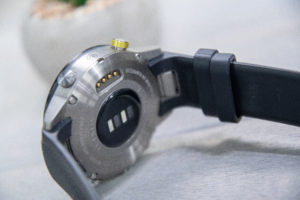







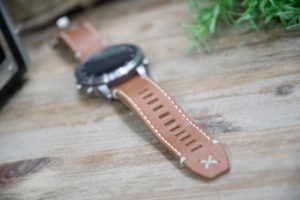


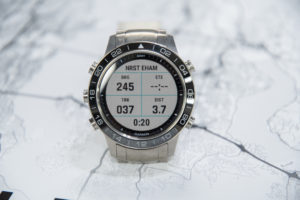
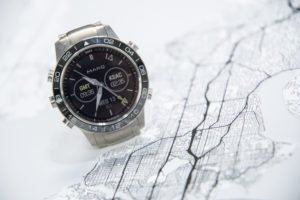













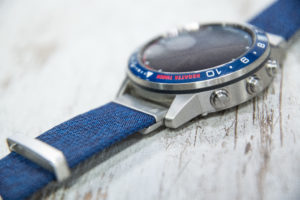
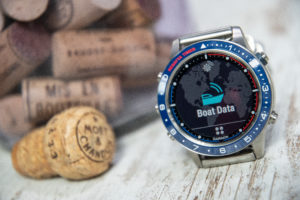





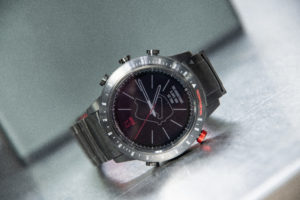
















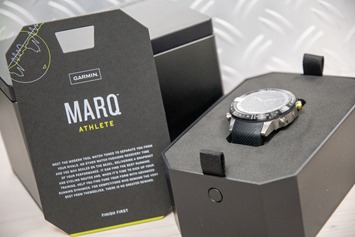






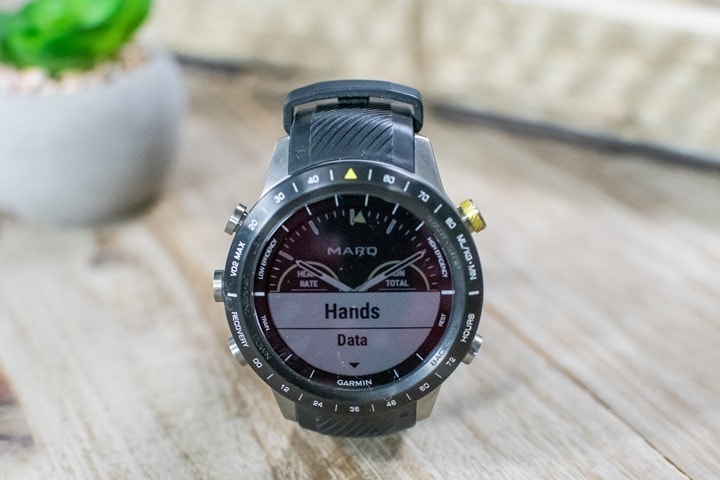



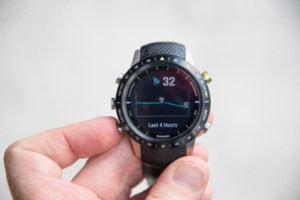





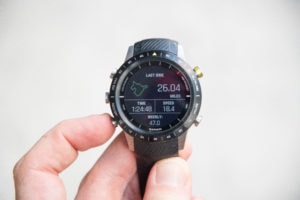
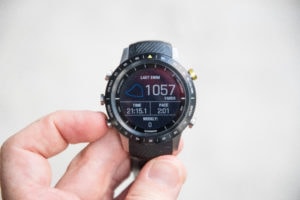






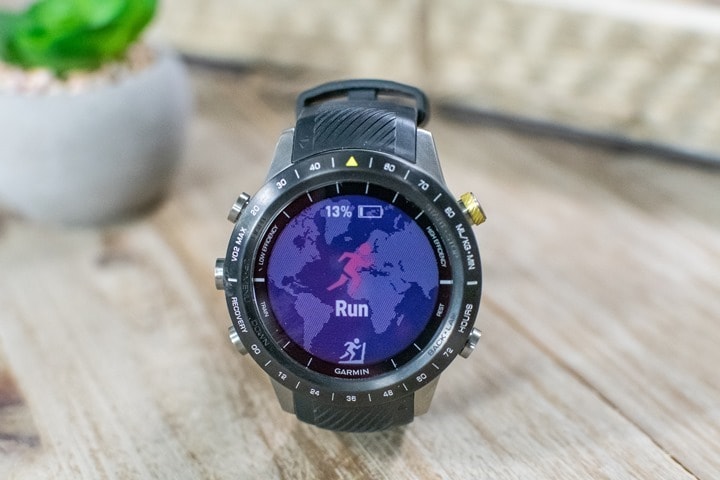













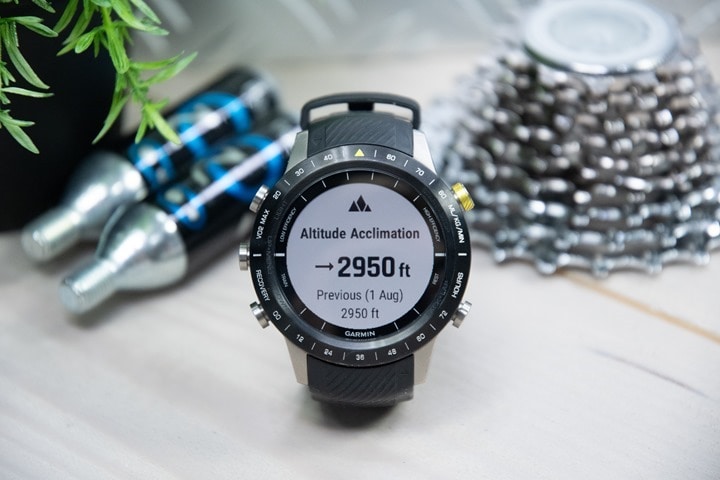






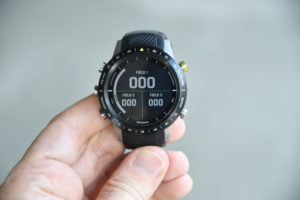




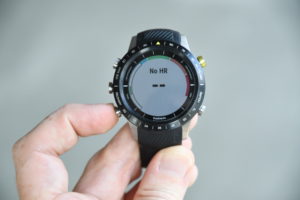

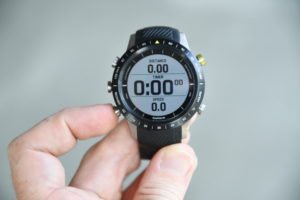




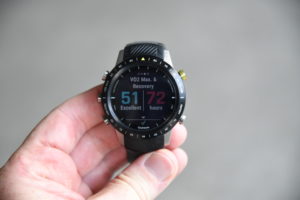



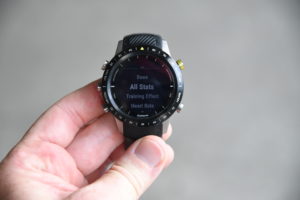
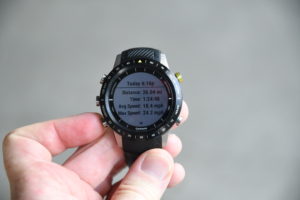




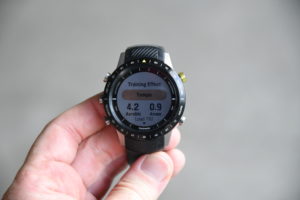











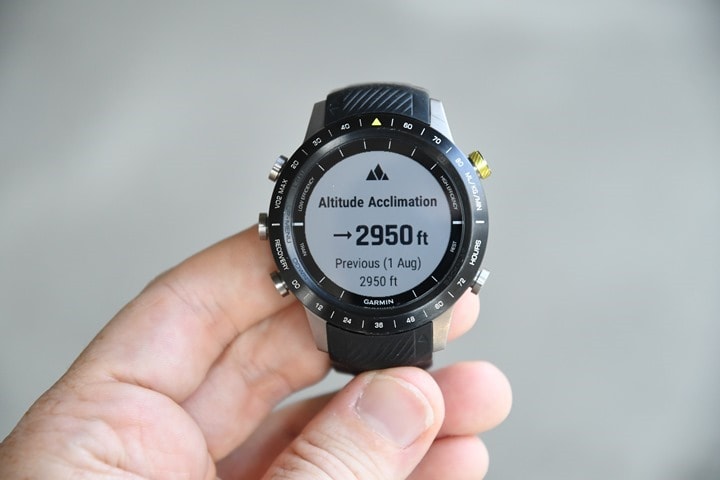


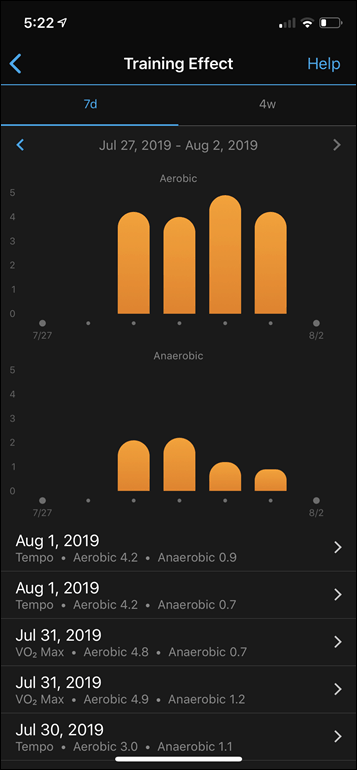
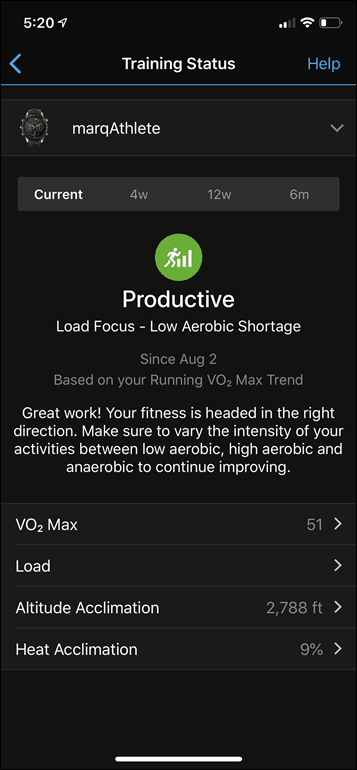












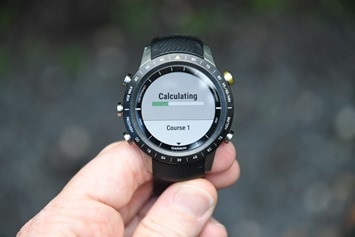







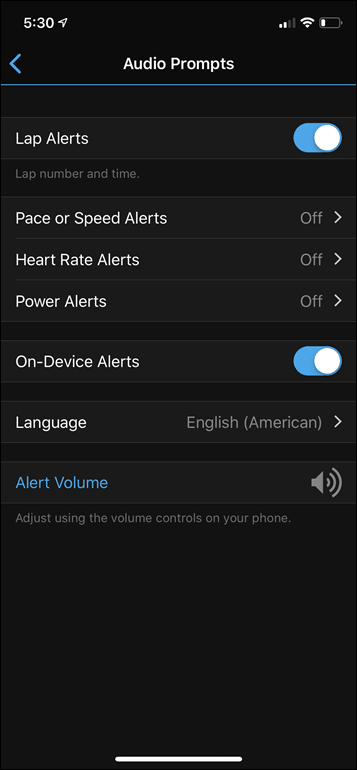






























































What Garmin needed to do is to is to put an OLED screen on this and stick double the battery inside to drive it.
That would have done the product differentiation trick and everyone could *see* why they would spend more money.
This way, it’s just silly. Or stupid. Or both.
I absolutely loved wearing the Expedition. Every other Garmin pales in comparison. I even wore this more often than my Omega and Rolex time pieces.
Yeah, I don’t really think OLED is the solution here to be honest. And doubling the battery simply means it being even bigger (and even then, you’d still be in an always-off screen scenario like Apple Watch or similiar).
I suspect for the Athlete mode specifically, the key consumer for this unit is someone who already has a Garmin, but wants a nicer looking Garmin. For the other markets (Aviation/Marine), I suspect the same is mostly true, with a side dish of pulling in people from some of the luxury brands that want to flirt with an Apple Watch, but still want the look of a classical time piece.
Absolutely this. If I won the lottery I’d definitely be tempted with the Aviation model, it is much nicer than the TAG Heuer Connected. Style focussed rich people don’t want something as generic as a Fenix or Forerunner on their wrist.
I’ll stick to my comment. With the AMOLED Venu out, Garmin proves it is possible and *OLED is the future. Worse, the new fenix have larger screens with more resolution.
Making MARQ look obsolete so quickly, is a slap in the face of any customer that bought this. Or let me quote you “to make this a true premium concept, they need to actually flip the paradigm and launch these new hardware features (whatever they may be) on MARQ, and then have them trickle-down”
So is it agreed that is sep 2019. Should you buy the Garmin Fenix 6 or the marq athlete.
I agreed I hope
They bring out a high end oled
Different target markets. At this point with where the technology is today, I don’t think having launched an AMOLED Fenix 6 would have carried a ton of sales. In fact, I think it would have cost Garmin sales in the long run.
Now, where things might be in a year from now? Who knows. I think they need to get 5 days of battery life in always-on (defined in the same way as Venu) with an AMOLED screen in order for it to be viable on a single Fenix 6 SKU.
I don’t want OLED on a sports watch… it drains power, it’s near useless in the sun (unless at max brightness), isn’t always on and burns out over-time so you get colour shift. The extra battery to drive it wouldn’t be worth it (not to mention the size increase) and then you’d probably want a faster and more power-hungry SoC to power it and make it smooth like an Apple Watch.
If you want an OLED display then you probably want an Apple Watch or Samsung Galaxy Watch and then deal with all the shortcomings of that, like barely being able to finish a marathon and having to charge it every night.
Garmin Venu is a casual lifestyle watch not a true sporting watch.
Thanks for the review Ray, have been waiting for this one for a while now.
Perhaps a coincidence but I returned my 6 month old MARQ Expedition to Garmin for a refund today due to massive issues with music playback via Bluetooth.
I got a replacement and the original watch was sent to America to be tested. The new one had the same problem, I must have tried 10 different models of Bluetooth earphones, including ones recommended by Garmin.
That’s super weird. I’ve tried now: AirPods (V2), PowerBeats Pro, Jaybird Vista, some old PowerBeats from like 3-4 years ago, and the cheap $20 Anker headphones. I think I even tried some Skullcandy ones back this winter. No notable issues. Odd.
Indeed. Not many other users have reported this issue. I did a boatload of testing for Garmin.
What surprised me the most was the fact that the second watch had the same issue- must have been something account related. A bit disappointed as I loved everything else about the watch.
I do think that map drawing should have been quicker than that on the Fenix 5 Plus considering the updated processor and extra memory.
Curious to see what the next Fenix watches will bring.
“(I haven’t seen anyone pin down what chipset Apple uses for the Apple Watch, but frankly it doesn’t matter – GPS accuracy on land is worse there)”
I am not 100% sure what you meant by this statement – that GPS on the AW is worse than the Garmin Marq and 945 on land? In my experience running with those 3 watches, the GPS on the AW4 significantly outperformed Garmin on virtually every run – and the AW4 is the only watch that gives me a relatively accurate and consistent instant pace while running (without a footpod). Do you have any runs with the AW vs Garmin Marq/945 that you could share?
The Apple Watch (including Series 4) highly smooths turns, and will often cut corners entirely. It basically ‘swooshes’ around things. Oddly, it does better in openwater, likely due to all that smoothing.
Check out my Apple Watch Series 4 review for examples of how to spot it. I suspect once you see it…you can’t unsee it. :)
AW uses a much, much higher degree of smoothing on the backend to make tracks look good, but if you run the same routes with both watches, you’ll notice that Garmins will hit the mile markers at roughly consistent locations, at least as compared to AW. The basis of accurate pace is, of course, accurate distance.
As for the instant pace field, I’ve never used it, but I wouldn’t be surprised if what you’re seeing is also a more highly smoothed instant pace on AW. It’s a shame Garmin doesn’t have options for rolling average paces (10 seconds, 30 seconds, etc.). Most people who use Garmins for pace use either current lap pace or a footpod for instant pace.
Beat me to it.
You’re on my morning website checklist – so I read that review some time ago! I have noticed the “swooshing” you pointed out (and you’re right – I had not noticed it previously and now cannot unsee it). However, even with the swooshing, I find that the AW smooths out a few corners here and there (losing a few meters overall) – but the majority of the time it is dead on accurate. In contrast, my Garmin is hit or miss – and more often misses – and can be substantially off at times (by 20 or more meters for significant portions of the run). Garmin’s instant pace data field is likewise a mess. I find the swooshing to be the lesser of the two evils. Given the current state of GPS with Garmin, Suunto, and Polar using the Sony chip, I think the AW deserves some more love for its accuracy (even with a little swooshing)!
Natively the Garmin watches offer no rolling pace averages. There are lots of apps /datafields in the app store however that does. In my Datarun premium app users can even choose between 5 to 300 seconds
I agree that there’s definitely a market for these watches. They’re sort of the modern incarnation of the tool watches that watch dudes drool over: something a little rugged that advertises your active lifestyle while looking decent with street clothes.
For me the big issue is that I don’t think these particular models look that great. To be honest, I prefer the cleaner bezel of the Fenix 5 Plus (titanium in particular). I think to really knock it out of the park, these would have had a slightly smaller and thinner case and a better screen. OLEDs are obviously a non-starter in this segment, but they could have at least tried to increase the resolution. Suunto and Polar both have sharper screens. I actually think that a non-backlit, always-on display could hypothetically compete for a very long time if they could get much better contrast and much better resolution because even if battery problems with OLED watches could be solved, not everyone wants a glowing beacon on their wrist 24/7.
Yeah, I think in some ways Garmin needs to get to the point where the MARQ series ‘lead’ the way in terms of specs. Meaning, up till this point Garmin ‘trials’ things on the Fenix ‘X’ variants. So we saw maps on the 5X, then PulseOx on the 5X Plus. By time MARQ came along, it was just some new software features that they didn’t promote at launch (not till the FR945 came along two months later).
For Garmin to make this a true premium concept, they need to actually flip the paradigm and launch these new hardware features (whatever they may be) on MARQ, and then have them trickle-down to the Fenix series. That would drive proper geekery lust (and probably some annoyance from some).
Personally, I think the MARQ Athlete specifically is actually the ugliest of all the MARQ watches. I think the Captain is the prettiest. But I just really dislike the yellow accents on the Athlete. Now if it had been red accents…
> I think to really knock it out of the park, these would have had a slightly smaller and thinner case and a better screen
That might be impossible right now no matter how much money you throw at it. A far more realistic option to “knock it out the park” would be worldwide maps, there surely would not be any insurmountable engineering challenges in that. Global maps would not only add massive legitimacy to the price difference over a fenix (“it has five times the maps, it’s almost a bargin at three times the price”), it would scream status as well, in an almost retrofuturistic way: “all the maps” would be a feature for the global jet-set, which sounds totally space-age, the era that gave us the Concorde. There’s hardly a better time to associate a luxury watch with.
I agree with you. Sharp looking always on watch faces without a back light that not too battery intensive is what the industry needs for more mass adoption of 24/7 sport watch usage. Garmin is in the best position to solve this as they simply have to increase the resolution on their displays.
Alternatively Polar/Suunto can offer 3rd party watch face support.
> Garmin is in the best position to solve this as they simply have to increase the resolution on their displays.
Unfortunately, there is absolutely nothing simple about increasing the resolution of transflective displays.
My Fenix 5+ will do the silently-enter-sport-mode then beep! “timing out of sport mode in 30 seconds since you didn’t pick anything” thing too every once in a while, usually when I am sitting at a keyboard not-sporting and pretty sure I haven’t flexed my wrist enough to bump that button (since I can’t push the button with wrist/back-of-hand even flexing back using my other hand).
Thank you very much for the review. I belong to the first group who think it’s ridiculous to spend such an amount on a watch. But…I like them a lot :D especially the athlete and expedition. The leather strap on expedition is another joke, it’s beautiful but unfortunately I can’t afford spending 180 quid on a leather strap for my watch :D wish they brought the detailed training focus and different training statuses to fenix 5 too, this is something I’d really appreciate having.
So. Much. Artificial. Market. Segmentation. (And really, *another* charging cable?)
If Garmin just went ahead and released a premium watch with some real hardware differentiators (say, expanded memory for a true global basemap), several designs at price points set by the materials used, and didn’t try to further segment things by adding one or two unique software features to each model, I might be interested. Instead, I’d have to choose between the model I most like the looks of and the model that actually has the added features I might use, and for the premium price point, honestly, I really don’t see a killer feature.
Not to mention, given how buggy Garmin’s software tends to be, I’m not sure I’d actually want to trust or rely on a feature that literally only exists in one or two high-end models. I can’t honestly decide if these are actually intended to be a real high-end tool, or just an expensive toy for those who can afford it.
The separated specialisations dramatically increase giftability, which must be an important factor for this kind of luxury device. Garmin can place these in the gift guide sections of magazines where wealthy spouses and wealthy relatives of wealthy hobbyists will find them. A salesperson can do the “tell me something about who this is for” and show the buyer “just the right thing”. This all would be far less effective (if possible at all) with a single model that does it all. The business beauty in this is that those sales don’t compete at all with the rest of Garmin’s offerings, whereas almost every sale of a “luxury does it all” would be one less sale of a more mainstream Fenix.
Did I miss the weight comparison? Of course it’s going to be heavier than the 945, but when I was in a high end watch shop (with a broken link for my chronos), I noticed the Marq is much heavier than the all titanium chronos case. Not sure if that impacts functionality but it seemed a huge difference
In case Ray has already shipped his loaner MARQ units back Garmin (along with the maxed out shipping insurance), I’d taken some comparison weight pics a while back between my MARQ Athlete and Fenix 5 Plus Sapphire (see uploaded pics – hopefully); both units are physically the same size and use 22mm QuickFit bands, so a fair comparison. The MARQ Athlete body is actually circa 4 grams lighter than the Fenix 5 Plus (MARQ 60 grams vs 5+ 64 grams), but it’s the MARQ’s heavier silicone band that makes it 6 grams heavier overall (MARQ 94 grams vs 5+ 88 grams).
So a premium feel to the band comes at a weight penalty, but the overall feel of the MARQ is a way more secure fit on the wrist than the Fenix 5+; partly due to the slightly lighter watch body and partly due to the flatter underside of the MARQ. The Fenix 5 Plus has a slight ‘domed’ effect to the underside that touches your wrist, which means it does ‘feel’ like it wobbles more.
I’ll take some nice comparison/weight shots Monday. Cheers!
What, my pics aren’t ‘nice’ ?. Although I’ll take that one as my scales were a bit messy that day ?
I weighed my chronos with running band at 79 grams – with titanium band a whopping 104 grams
Great review, thanks. What about real life battery performance? Both with GPS and as a smartwatch. The few comments I have picked up says that GPS is on par with specs (depending upon sensors, navigation, etc), but smartwatch mode may be worse.
Yeah, GPS performance seems acceptable for the most part. One interesting tidbit I haven’t publicized too much is the DCR Analyzer now shows current burn rates for all Garmin/Wahoo devices (and soon also Stages, once they add in support).
So some random burn rates for GPS (all 1-second recording and PulseOx also enabled, all daytime, no navigation, smartphone connected, usually not live tracking):
Run w/no music and GLONASS: 4%/hour
Run w/music and GLONASS: 14%/hour (music being the killer here)
Cycling with Galileo + power meter/eTAP: 0.75%/hour
For regular usage I’ve gone back and forth a bit. I mostly leave PulseOx enabled (for no good reason), and thus I’m seeing perhaps 4-5 days before charge. Though, I’ve also seen once or twice total burn-out in 1-2 days. I haven’t switched off PulseOx to see what it looks like, though I know PulseOx is a massive hit to battery.
Hi DCR,
Thanks for another great review.
One feature/bug the aviation guys are complaining about is the default icon for sports is an Airplane. :) They would like customized icons for each “sport”
Small “bug/correction”:
as pointed out previously Garmin SW has for the last year allowed for indoor pool sizes of 14m (not 17m as your sheet says) on at least Fenix 5x/5x+ & 945. Probably a lot more than I’ve listed though.
Ahh, that’s right!
I had that on my to-do list to update across the database. The new mins are: 14M/15Y TO 150Y/M.
And they are changed on: FR645/M, FR735, FR935, FR945, FR245, FR735XT, Fenix 5, Fenix 5 Plus.
Thanks!
I dont quite see the usefullness of the special Expedition feature of 4 weeks continous recording at 1-hour intervals just yet. It just simply seems to connect dots in a straight line, no matter what you did in between/ where you went. I thought that they might be using something similar to Suunto with their ‘fused track’, but that doesnt seem to be the case. Fine I guess if you follow a straight line, but in reality, that might never be the case in an Expedition kind of setting….Also, in my case, the GPS (in particular with Galileo and Glonass) seems to not be great at all. This is particular noteworthy when you navigate. Seldomly, I find myself on the actual track, more often than not, I have some significant offset, such that in some cases, the actual planned tracked is not visibile anymore (with lots of ‘jumps’ in between and around). The latter can sometimes be a little annoying – in navigation mode, the battery life is also not great, navigating for say 4 hours drains the battery by a good 40-50% in my case (which I guess is somewhat expected)…
I think this would work if Garmin does a yearly refresh with some features not available on the Fenix or Forerunner. How about a subscription/lease model? $5-600/year. Trade it in every year for?
That’s sort of what you can do with the iPhone. Apple has a program where you pay $x a month (technically a 24 month loan at 0%) and at the end of a year you can trade in your iPhone for the new model. I’ve done that a couple of years and my daughter for a few years. You don’t have to trade in if you don’t want to.
But would you want to do that with Garmin with it’s reputation for software bugginess? After a year, trade in your now mostly working watch for one that has new problems?
I have just connected my Marq Athlete to my computer and set it up in Garmin Express. (actually to expedite the FW Update to 3.5). As you can see in the attached screenshot, Garmin proposed to add “Coverage” for the whole world, on top of an update of TopoActive (?) for Europe, which is my home region.
Does this actually mean that maps for the whole world are now included?
Sadly no. It’s the golf course maps for yet ROW that you’ve got. The only TopoActive map you have is for Europe.
As an aside, if Garmin did enable world wide TopoActive on the MARQ, there are 2 things to note: First 32GB might not be enough (when you look at the size of the latest TopoActive maps for just one continent. Second, is that Garmin don’t even offer TopoActive maps for many areas of yet world (much of Africa), so you’ll still have to rely on third party maps for some trips to less than first world destinations.
Yeah, it’d undoubtedly be more than 32GB. Plus, you might want numerous GB for music anyway.
I think my thinking is that it should be roughly akin to how Wahoo (or Sigma, or others) work in terms of maps. If you want to add another region, it’s simply a quick and easy option on the app and then it connects to WiFi and download them. Done. Really, it should be that simple.
In the case of Garmin, they’ve got even more depth in mapping options for things like different types of maps (Topo, Birdseye, Driving, etc…), which again – should all be options on the MARQ series. It should the marque feature. Get it, marq-ue? Nevermind.
Just checked on the MARQ Athlete product page and I stand corrected (by myself ?) on the TopoActive cover. It does now appear that the whole of Africa can be purchased as a TopoActive download (at circa £45), so it technically would be possible for TopoActive for all continents to be made available. Although the previous comment about them collectively being beyond storage capacity relevant. I’m just not inclined to splash out on buying all continent and trying to download them to find out (when there are free maps that do the same job).
I missed Ray’s reply as I was posting. I agree that it would be great to install/uninstall the TopoActive maps for continents as required (also agree that Garmin should have included all available TopoActive maps to MARQ owners as standard). It’s just Express doesn’t seem to include an option to uninstall a map, so there would be a need for a change in functionality across interrelated Garmin platforms to make that work; complexity that always ends well and without bugs….. ?
I have one of these and, just because, I’ll share my thoughts. There will be some AW vs MARQ comparison’s here.
1) Set up was pretty painful. I did get it paired with my phone but it took several tries.
2) My headphones didn’t work with it. I purchased a pair of PowerBeats Pro Totally Wireless and they work fine. My Plantronics would drop connection with my arm at my side, basically, when I’m walking. Same problem with the Jabra Elite.
3) Spotify sucks at Podcasts. Actually, I’ve never successfully downloaded one on the MARQ (gave up). But, even on the F5+, where it worked, having to open the Connect app, then chasing down the podcast, the waiting 5 minutes for it to download sucks. I wound up plugging it in to my MacBook but then I’m limited to the apple podcast ecosystem. The AW lets me use OverCast which works 100% of the time, every time.
Garmin Support suggested that my Spotify problems may have been fixed but I never tested it. Even working, if it was the same as the 5+, it was too painful to use.
4) Battery life is probably accurate unless you run SpO2, then good luck. The thing is SpO2 is a major selling point. To say you get 9-days, if you don’t use SpO2, is something I missed in the promotional material.
5) I found GPS to be solid once I switched to GPS + Glonass. No complaints here and it’s absolutely better than the AW.
6) Minor quibble, but the buttons are too big in the sense that they dig into my wrist bone and get stuck in hair. The Fenix / Expedition buttons were better for me. The buttons are excellent, solid, and much better than my F5+ in terms of their construction.
7) I initially bought an Expedition. The strap had probably been worn as the white stitching was almost black in places. I doubt it was the packaging but it could have been. Long story short, that band, will be clean for about 15 minutes.
8) Speaking of straps, the rubber strap is a much better fit than the strap on my 5+. The thing about this watch though, is it’s heavy. I barely notice the AW, I definitely notice this watch.
9) It’s smarter than before but it’s still not very smart. The fitness features are better, the smart watch stuff, meh.
In closing, I’ve gone back to the AW. I didn’t do it just because of anything above, but because my knee has been acting up. And the thing is, if I’m not running I have a very hard time justifying the money for this watch. Sure, it looks good, but if I’m not being serious about running, then an AW is better at everything else for a 1/3 of the price.
Here’s to EBay getting a good chunk of my money back so it’s not a total loss.
– Auto Lap Splits based on position
It is interesting to see this feature return but only on the Driver version. This used to work on my very first Forerunner watch, and while it wasn’t quite accurate enough to precisely record laps on the track, I quite liked it for cross country running races (where each lap is typically 1-2km).
How many CIQ fields does the athlete watch allow at the same time? Is it still limited to two?
Yup, just the two.
That is the most important piece of info related to Marq. It shows the max/potential performance of the watch. Not better than that of its ‘parents’
Hi you would think at this price point they would also incorporate scuba diving-ie mk1 features? That said you know if they will update update the mk1 (mk2?) w/ new heart rate monitor (gen 3) and wireless air integration, etc? I assume that unit does well for garmin. I now go on vacations with 2 watches and would prefer one all in and would pay the MARQ price if that were the case.
Thanks.
Yeah, it’s definitely a gap.
At the same time, it’s also tricky. The MK1 is super-slow on firmware updates, by design. For example, just this week it finally got basically a year’s worth of Fenix 5X firmware updates. Garmin stated from the beginning that one should expect super slow firmware updates, due to additional safety-related testing.
Though, I don’t think we quite thought they meant this long. I suspect that was exaggerated by the fact that they build the MK1 on the Fenix 5 (base) platform and not the Fenix 5 Plus platform. So basically they were having to work on an ‘old’ codebase, which undoubtedly hurt them efficiency-wise.
Thanks DC. You think an update to the MK, ie an mk2 is on the horizon and a switch to the Fenix 5 plus platform for coding— maybe onboard music and gen 3 heart rate tech too? Thanks.
Not sure. We don’t have any historical data to compare for since it’s a new product line.
This fall would be the two-year marker, so that’d make for a good time. At the same time, there’s also plenty of other Garmin products that operate on 3-year cycles.
I am very surprised with the way that Garmin have decided to go with the different Marq versions. The Fenix 5 is a pretty cool design with a unique appearance and the beginnings of a lineage of design appearing. That’s a very difficult thing to achieve and credit to the Garmin designers who created the Fenix 5 range. If you are going to try to make a high end version of a relative low resolution screen, plastic cased watch, would you then clearly plagiarise easy to identify watch designs from the traditional watch industry?
They should have created a titanium case and hardware, improved the display to be the most impressive available, added world maps (as Ray noted) and created better anti aliassed watch faces. Then put the remaining effort into fixing the underlying firmware and Connect.
I would not be surprised if Omega or Rolex or other would sue Garmin in the future over this issue. What makes this situation worse is Garmin allowing blatant rip off of many high end watch faces complete with the words Omega, Breathing, Hublot, etc., clearly displayed. Below is such an example of a Marq selling on eBay UK.
Garmin don’t and shouldn’t need to copy these established makes but of course it’s an easy route into this potential valuable miss guided luxury market.
Also, I would expect that most consumers of the Marq versions would not even notice how poor and buggy the software is. What racing driver in his right mind would choose to select a race track from a selection of 20 and then what level of detail from that 240px display could possible be of any value. Again, navigating a yacht using a 240px display, I think not.
I honestly think Garmin actually nailed the hardware on this one for the most part. Going with an Apple-like screen means Apple-like battery performance (24-36hrs and not always-on). There’s no magic bullet here.
As for navigating a yacht or aircraft with such a display, honestly, that’s been happening for years with the Quatix and Delta series watches. People are typically using these as secondary control devices, not as the primary method of determining a route. In the same way that most of us running/riding wouldn’t actually route-plan on the watch. We’d do it on a higher resolution display. And to that end, Garmin’s been really successful in those markets. So I think they’re actually getting that right.
As for 3rd party Connect IQ watch faces, that’s interesting. I know Garmin has done some culling in the past when they see things that violate IP. I don’t know what their current stance is there.
Just my two cents.
” Also, I would expect that most consumers of the Marq versions would not even notice how poor and buggy the software is. ”
Oh boy where do I begin! I am on my third MARQ! It has been nothing but issue after issue! Screen dying, battery not lasting more than 4 days!!!! U HAVE NO IDEA!
With regards to the GPS testing, I know you’ve done a good job. I’d like to just add (IMHO of course) that you should read up on all the different types of DOPs or dilution of precision.
Doing the same route at different times of the day should help with your GDOP for instance. What
Multipathing off of trees and buildings with also add to your PDOP and so on, There’s alot in it…
This may give you a new perspective on how you could represent you data in the future…
I think in essence the user needs to look at what for and where he or she is using the GPS device and either lower or increase his or her expectations of the data accuracy and precision.
I don’t claim to be an expert just want to try add something constructive
True.
But I generally take the opinion though that a GPS watch shouldn’t be limited to certain times of days or certain wrists. It should just work. If it fails to work, then the GPS watch is a failure (end).
Hello Ray. Thank you for this long awaited review! You wore the watch several weeks. Did you notice scratches on the Titan surface? I took a look at the Marqs at the Roth Challenge Fair and found the Material a little bit „soft“. Had doubts if it tends to look ugly very fast. What are your experiences?
No obvious scratches to me.
The vast majority of the photos in this review were all taken in the few hours prior to publishing. Basically everything except the Series Overview section, Unboxing and some of the ‘Day to Day Basics’ photos (some are older, some were Friday).
As for the units at Roth, I frankly wouldn’t be surprised if they were super old demo units (like, from January). Perhaps even earlier prototypes.
Thank you once again for your reply! Good to know that my fears obviously won’t come true… And yes: This might be the explanation for the “cheap feeling” in Roth. Maybe this were dummies or protos!
Ray, you may not have noticed it, there there are scratches/dings around the bezel of your Athlete review unit. Below and above the “36” at the bottom of the bezel, and extending to the hash marks to either side of the “36”. There are also some at the top of the bezel between the “green triangle” and the “60”.
link to media.dcrainmaker.com
link to media.dcrainmaker.com
Users on the Garmin forums are experiencing these dings – and worse (scratches across the entire bezel.) The “DLC” material used to paint the bezel black on the Athlete version and Driver version isn’t particularly durable. The titanium material to which it is bonded is not especially scratch-resistant either. It’s Grade 2 Titanium (pure Titanium), which is softer than stainless steel. Grade 5 Titanium (a Titanium/Vanadium/Molybdenum alloy) would be much more scratch-resistant, but also more difficult to machine.
For anyone worried about scratching, get the Expedition model (titanium bezel – scratches will be the same color) or the Aviator / Captain model (ceramic bezel – which should not scratch.) The titanium parts on those watch versions will still scratch, but the scratches will be titanium-colored and can be polished out (with a finger nail polisher/buffer or a rubber pencil eraser.) But once the black coating on the Athlete or Driver versions gets scratched or dinged, there is no going back – there will be a silver-colored scar on the black-colored metal.
All watches/metals are going to scratch. It’s only a problem when the scratch color is a different color from the surface that is scratched. Garmin should have considered this for a fitness-focused watch.
I’ve had about every Garmin watch at some point including the 5 plus and 5x plus. The Chronos is still my daily wear. I assume I’d be equally happy with the MARQ.
Nothing but nothing sums up Garmin in 2019 as perfectly as charging customers $1500 for a watch with dodgy ‘open water’ functionality with a slightly annoyed “we’re working on it … alright!!!”
Scott, the good news smart watches have 3 year life span, then you buy the new improved version.
So you aren’t stuck with it for 4 generations like a Patek Phillipe.
In the summary: They needed take features ‘away’… => They needn’t take features ‘away’…
That aside, thanks as always for your great content :)
New charging cable – hilarious
Great review. As a Fenix 5 Plus owner I can’t really justify the cost of the upgrade, but I do like that Garmin is venturing in this direction. I like the idea of a premium Garmin watch, I personally just don’t think this is premium enough command that price point.
From a features standpoint it strikes me as weird how they handled this. So being a tech nerd I always want the latest and greatest, so when I saw some of the newer features like body battery and acclimation I was jealous, but understood why I didnt get them via an update on my fenix 5 plus (specifically the ones that don’t need pulse ox), but then when Garmin included them in the FR945 I was a bit annoyed since I had not even had the Fenix 5 plus for a year when that came out. I find it a bit frustrating to purchase a premium watch, and less than a year later not get a critical update…( I liken this to buying an older phone, but still getting the newer IOS) I would also imagine anyone who shelled out for the MARQ may feel a bit slighted since there really isn’t much different between the 599 and 1499 watches. One thing I will note here is I think I did get crash detection on my 5 plus through a firmware update at some point.
For a hardware standpoint for me to command that price tag I would like to see things like multiple bands (silicone and steel at a minimum) leather could be cool. I would also like it to look more premium(I know this is personal) but it should look more like a higher end watch something more along the lines of a Swiss diving watch, maybe even a steel look (i know steel would increase weight but at the same time it is a luxury watch). I also love how luxury watch have engraving on the back of the case which I know is a challenge because of the sensors but just a thought.
Bottom line is when I look at this I just don’t see a premium watch, to me since the tech isn’t what is supposed to make this stand out (clearly since they put the same tech in their 699 watch) then the aesthetics should, and I personally just don’t see it.
I’m personally holding out for the Fenix 6 ?!?!
Again great review as always
Do we know what the resolution of the screen is for the MARQ series?
The Fenix5 and FR 945 all have 1.2″ displays with 240×240 pixel resolution. I can’t find this information for the MARQ series.
Garmin doesn’t need to go with an OLED screen to make the watchface look better than a Fenix 5. A higher resolution display with more color depth would do the trick. An Apple-like retina display (non OLED) might be a good trade off between looks and battery life.
I need that Captain band without the accompanying price tag. Really, $199 for a nylon band?
I had the exact same thought. I’d get it for my Fenix in a second if it were reasonable. Even the $50 for the OEM silicon bands is a little silly.
Don’t MARQ Athlete and Forerunner 945 actually have tide tables? (Re: Product Comparison list.) At least with a US 945 on 2.60 sw, you can see tide tables under Activity > Navigate > Points of Interest > Tides > (some POI) > Chart .
Unfortunately the “Tides > Search Near > Saved Locations > (some location)” path doesn’t seem to be able to actually search POIs near said saved location.
Huh.
I’ll get some clarification. I just tried your steps and…nothing happened. Like, it just forgot what it was doing on the last and is sitting there. I’ll hit up that team though and get the scoop.
Looks like that with the US 945, you can manually find tides tables for random US locations (Navigate > Points of Interest > Tides > Search Near > A Map Point > (somewhere, e.g. Kailua Kona, HI) > multiple results with tide charts. Attempting the same against a non-US location (e.g. London) yields no POIs -> no tide charts.
Looks like the Garmin 6X Sapphire releases Aug 29th, at least according to Amazon, for $949.99 … that’s a big price jump, and now much closer to the marq … bigger screen, pacepro, topo maps, amongst other features
link to amazon.com
Ray, could you please try if the Marq’s charging cable can be used with the fenix 5? I’ve been hoping for a better charging solution for the Fenix for 2,5 years. i.e. a cable like the the one from the forerunner 735xt, that enables charging while wearing.
Is it just me or is the Fenix’s charging cable the dumbest Thing ever?!
Thank you.
No, not compatible. The Fenix 5 series charger is much tighter together and deeper into the watch, whereas the MARQ is almost more similiar to that of some of the Forerunner series (like the FR645) – yet wider than those.
So basically, it’s like the child of both charging cables, but not compatible with either. Sigh.
Why Garmin, why?! Just keep the Forerunner 735XT’s cable..
I had initially purchased the Aviator, thinking that I wanted a nice looking watch that can also do multi-sports. The Aviator was indeed very nice looking, probably best looking of all Marq models, but putting it on, I realized I wanted more a multi-sport watch in function and appearance that looks as good with a suit and tie as it does with a wetsuit. I exchanged the Aviator for the Athlete and I’m much happier. Now, instead of weekend trips packing my Tag Heuer and my ForeRunner, I can now go with just the Marq.
Love this watch, but sadly all of the watches that have all.of the functions I want are simply too big for a womans wrist. I really wish they would make a high end watch with all the features including ski overlay that fits a woman.
D2 Delta S might be worth a look then? Or the new Fenix 6S Pro.
can i say expedition is having a longer battery usage than athletic version?
I seriously wonder how of these they are actually selling.
My question now is this:
Garmin typically never add new features to existing products – just bug fixes.
If they don’t backdate features from the upcoming Fenix 6 – these watches will not sell much if any moving forward, thoughts?
That’s just not true. A couple of examples: they just this week added a boatload of new features to the Edge 1030 to match the new features on the 530/830. Many years ago they turned the Fenix 1 into a (semi) smart watch with an upgrade, adding capabilities it didn’t have at the beginning, their first foray into smart watches. So it’s certainly not unheard of. But whether they’ll add whatever new capabilities the Fenix 6 has to the MARQ remains to be seen. I’d guess they will if the hardware will support them, but we’ll see. The MARQ is a pretty strange play by Garmin.
I see there are no “buy now” links to support Ray, presumably due to the limited distribution. That’s unfortunate.
Has anyone found discount pricing on these in the US?
@Ray REI is selling the Expedition if you want to setup an affiliate link.
Thanks for the great reviews!
Thanks Smileman!
I had setup an affiliate link to it a month or two ago, but apparently hosed said link up, so it only showed up in the sidebar and not at the bottom of the post. Will update!
I still maintain the same as I did more than a year ago: Garmin has gotta be losing significant MARQ sales by not making these available in the places runners/pilots/boat folks/etc go and buy expensive things.
I have been using the Marq Athlete for about 6 months now. I come from the 935. Aside from the screen resolution not being improved, I am very happy with the Marq. Positively an everyday(and night) wearable watch. My 935 looked like crap after two years of wear and tear. This thing is quality built for sure. If style means nothing to you, don’t waste your money on this, get the 945!
Hi would you get the garmin athlete marq over the new garmin fenix 6 series.
MARQ or FENIX 6X SOLAR????
Marq or 6 pro or 6 solar.
I think the answer to both the above questions are honestly the same: What do you want your watch to look like?
Feature-wise, they’re identical – save for the solar functionality. If you find value in the small bit of extra juice solar can provide – go forth. But otherwise, it’s all the exact same software (MARQ got the Fenix 6 features via firmware update two days ago).
I am not sure, whether all Fenix 6 features are now available on the MARQ Athlete. In particular, the feature of “measuring heart rate optically while swimming” might still not be available on the MARQ Athlete. Is that right? Would be great if somebody with a MARQ Athlete can check and comment on it. This particular feature is quite important for me and I’d finally like to decide whether to get a Fenix 6 or the MARQ Athlete.
Fenix 6/6X have better resolution, better battery life.
Software features seem to be identical now.
MARQ has better looks and nicer straps. And cost more.
What else am I missing?
Garmin’s latest foray into this sector is today’s announcement of the Commander, which offers nothing over the existing Tactix watch (pricey enough for a soldier’s salary) above the Fenix-related improvements. I wonder of this means they’ll do away with Tactix altogether.
At such a bonkers price I can’t see many Commanders making it onto soldier’s wrists. And certainly not being risked in the field.
Hi all
I am having serious issues with my Marq Athlete being very inaccurate doing open water swimming.
anyone who has a Marq who also having issues ?
very very frustrated.
I think all of the garmin heart sensor are rubbish. I always use a chest strap as otherwise heart rate measurement is very inaccurate. As a doctor I really wish someone would come up with a better sensor so I don’t need a chest strap
All of the recent Garmin devices had issues with Open Water Swim GPS accuracy due to the new low-power Sony GPS chip. The latest firmware updates have significantly improved accuracy. Make sure you are on the latest revision. Check the related post in this site or look on Garmin’s user forums.
Hi. Sorry , after re reading my post , I see it is not clear that I am referring to the distance tracking whilst swimming and not the HR function.
Apologies all ….
Thanks Carlton.
My watch software is up to date so would that automatically sort the firmware as well ?
Generally, software/firmware is updated at the same time. You can use the Garmin Windows/Mac software to be certain everything is current.
You should be more specific about the problem. Zero distance? 10% shorter distance? Trace on map cuts the turns wrong? Maybe post a link to the activity via Garmin online. Also, there is a specific post discussing this issue (for any of the new watches, this isn’t Marq specific) on the Garmin forums. That’s probably the best place to learn more and try to reach resolution.
There is currently a GPS issue with that series: link to forums.garmin.com
One beautiful watch no dought about it!
The price tag is actually pretty high but if you can afford it and needs all the feature its worthy.
That it is. Have mine for about 6 months now. The only complaint I have is that the bezel scratches very easily and turns silver in those spots. For a piece of the watch that is known to take the most beating, a different material should have been used here.
How have been users experience of the Marq for all day and sleep tracking given the extra weight. I come from a Fenix 5 plus titanium and am concerned about the additional weight.
For me sleeping, it was better than expected. Recommend setting the band slightly looser than you would for a sports activity.
Probably comes down to how comfortable you are sleeping with something on your wrist. If you can sleep ok with other wrist devices it’s probably fine.
As to how accurate it is, not totally sure on that count.
Slightly embarassed to admit I bought the Marq athlete as I very much like my watches. I like it a lot but there are certainly issues. One issue that I haven’t seen flagged up in reviews is that the ultratrac mode is really inaccurate on my Marq compared to my old fenix 5. It drifts a huge amount off route and means it’s basically impossible to follow a track using ultratrac. This means I’ve gone back to the fenix 5 for ultramarathons as for 50 miles and up the marq just can’t cut it (reduced battery life doesn’t help). I’d be really interested to know if this lack of GPS accuracy in ultratrac is down to a problem of reduced GPS accuracy through a fully Titanium case or down to the new GPS chipset. If it’s the new GPS chipset I guess similar shortcomings would be seen using ultratrac on the fenix 6 so interested to understand if anyone has seen any evidence of that.
After owning a Marq Athlete for 4 months I can safely say it is not worth the money. Garmin have created a luxury price niche but not a luxury watch. The marq is underwhelming in every way, suffers from the same problems e.g. glitchy GPS in open water and has worse battery life, so much so I found myself constantly in ‘battery saver mode’. Your basically paying €1,000 extra for the metal look, hard not to feel like a mug for splashing out on the Athlete and delighted when (not without some difficulty) I got to return it. As I did want to upgrade decided to go for Fenix 6x Pro, the plan it swap this out in a couple of years, which you wouldn’t also do with a Marq.
Hi does the marq transfer its heart rate data in real time to the garmin edge 810 like my old vivoactive ?
Yup!
Hello,
do I have the right understanding…
When I like to buy the “Captain American-Edition” Watch, it is possible for me to set
the data screens for run/swim/bike like my Fenix 5 plus?
Yeah, the “Athlete” were better solution, but I like the blue bezel and more :-)